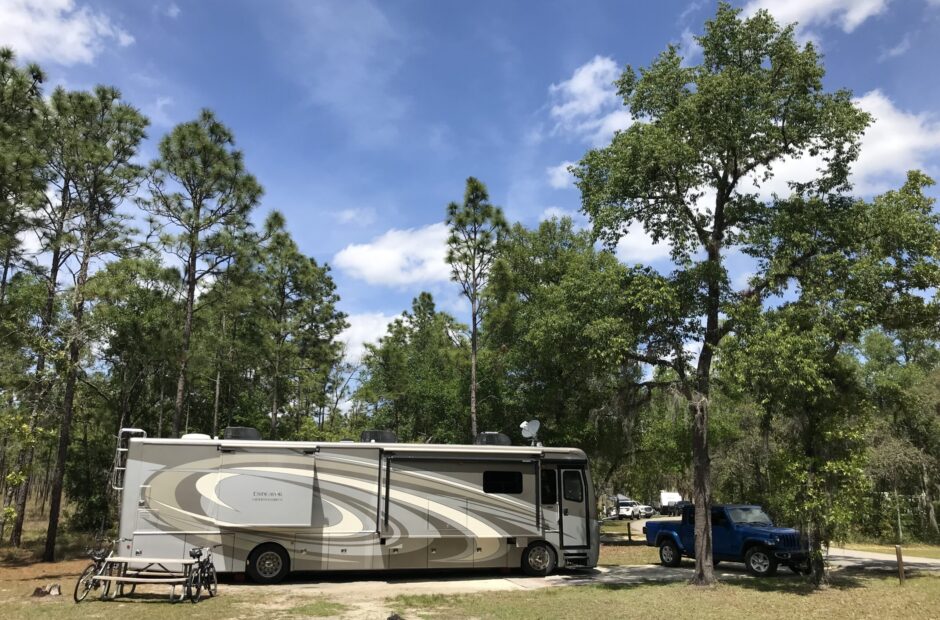James Island County Park, Charleston, South Carolina – Part 1
The angel went to her (Mary) and said, “Greetings, you who are highly favored! The Lord is with you.” Mary was greatly troubled at his words and wondered what kind of greeting this might be. But the angel said to her, “Do not be afraid, Mary; you have found favor with God. You will conceive and give birth to a son, and you are to call him Jesus. He will be great and will be called the Son of the Most High. The Lord God will give Him the throne of His father David, and He will reign over Jacob’s descendants forever; His kingdom will never end.” Luke 1:28-33
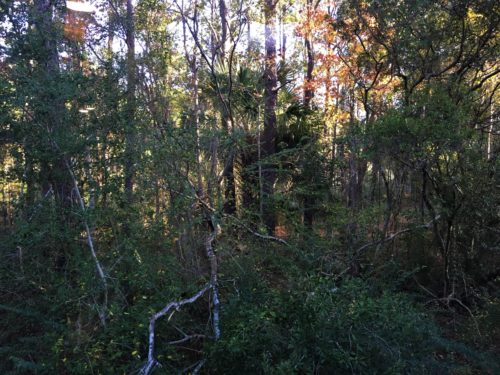
Good morning, world!
We’re back in the woods. : )
Today was designated, “Visit Downtown Charleston Day”. So off we went! It’s gonna be a long day. A really long day. And that also means a longer post. Especially since history is involved.
Our first stop was the Visitor Center where we confirmed some things we’d researched on-line and picked up a couple of maps. Maps are important if you’re gonna walk around a strange city! The guy we talked to also mentioned their free bus system that we don’t remember learning about when we visited last year.
Most of the time, I’ll just let the placards and pictures speak for themselves as we visited three separate Museums today – the actual museum and two different houses they own. I just don’t have the time to narrate each photo. It’s Christmastime and I’ve got many projects to complete before December 17th.
We were a little early for the Charleston Museum which was right across the street from the VC. We also needed to find a place to park for the day. Blaine suggested parking near the Circular Church where our last event for the day would take place, but there was nothing available. So we headed back to the Museum. By the time we returned (it’s only a couple of blocks, but there was lots of traffic), we procured one of only three spots left and parked for free for the day!
As we opened the door to the museum, we heard the sound of many children. There were several groups there this morning, and while we don’t normally mind them, there was a lot of turbulence as they talked, laughed and tried hard to not pay attention to their teachers, who raised their voices to be heard. It made it hard for me to concentrate on what I was reading. We tried several times to outrun them, but to no avail. They kept popping up around every corner.
So we left. We’ll return after bit when the school kids are back where they belong. Or at least, out of the building. 😊
But here’s what we learned about while we were dodging kids:
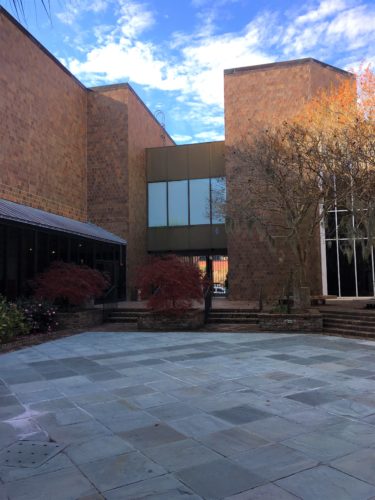
The Charleston Museum
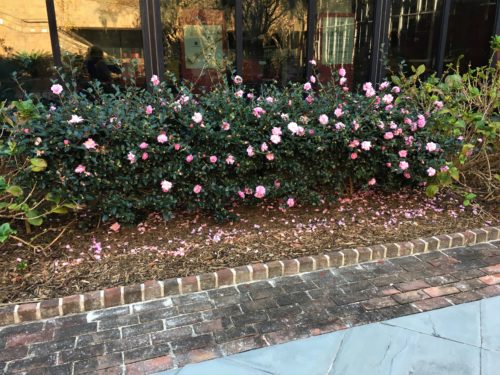
They still have flowers blooming around here!
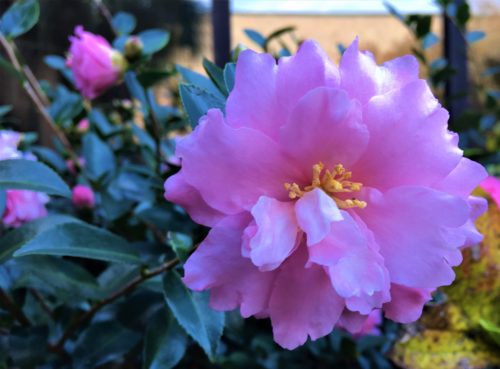
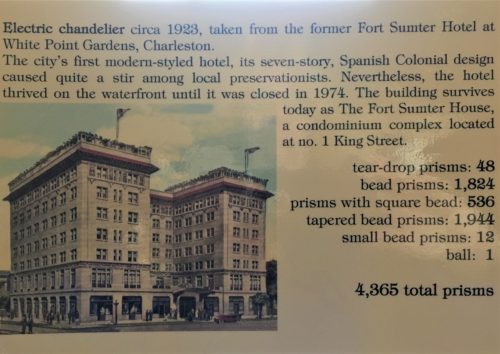
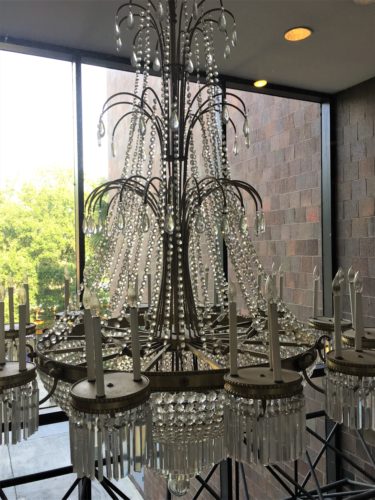
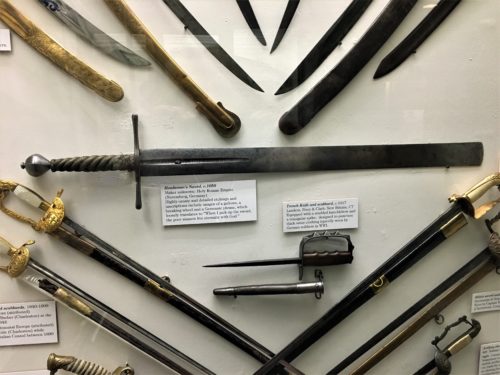
It’s the center sword that’s most interesting.
It’s an executioner’s sword. Gulp!
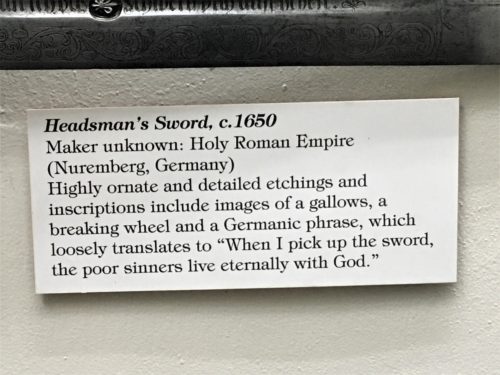
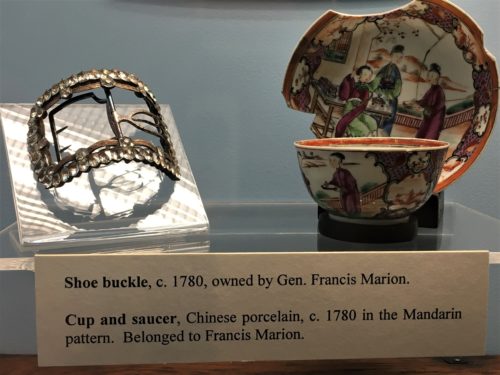
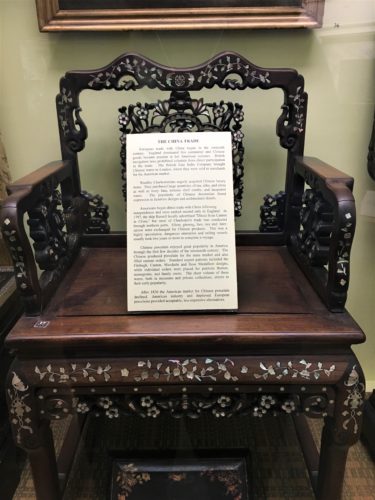
Chinese mahogany armchair with mother of pearl inlay.
19th Century
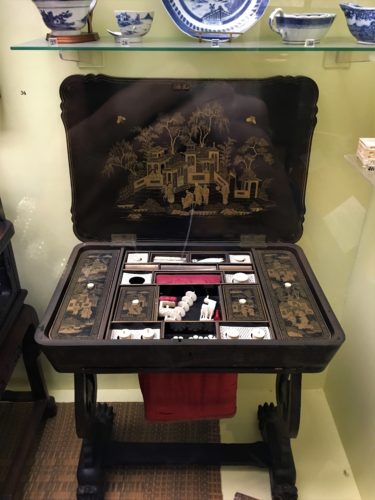
Lacquered sewing table, c. 1830, Canton, China. From the Adger family. Contents include ivory sewing implements.
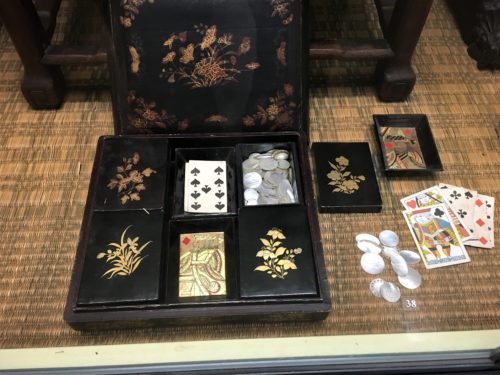
Lacquored game box, 19th century. Contents include cards, card trays and mother of pearl counters
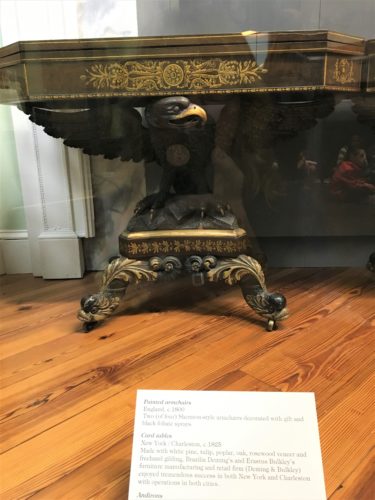
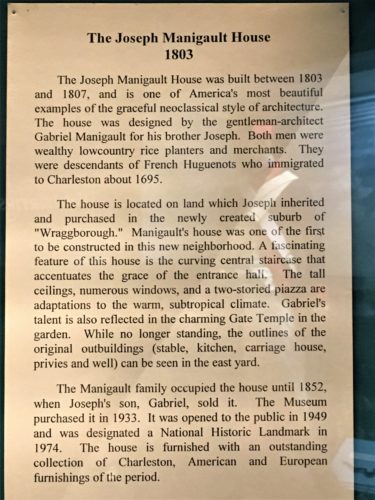
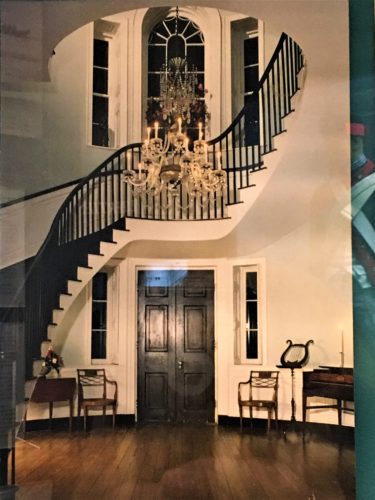
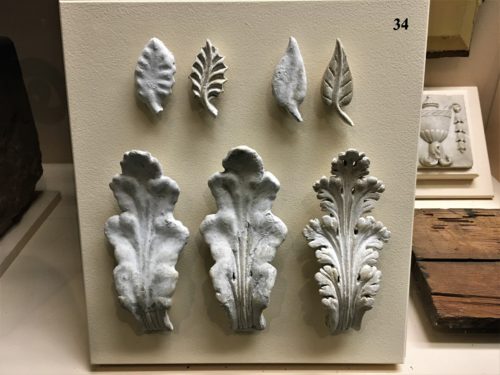
This display shows a restoration process. These pieces are from a 19th century home.
On the left of each section, is the way they found it – under many layers of paint.
The right, is restored to it’s original form.
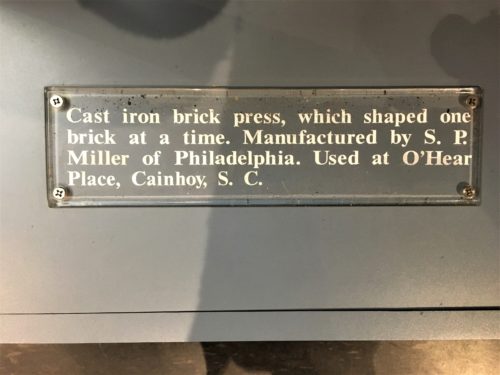
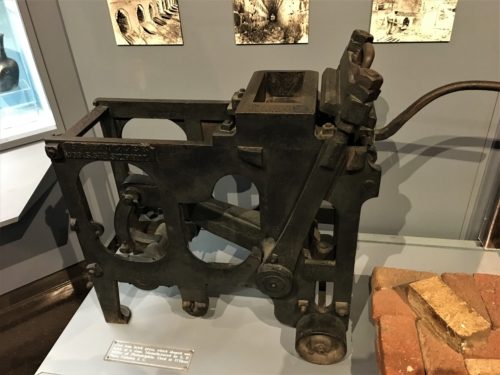
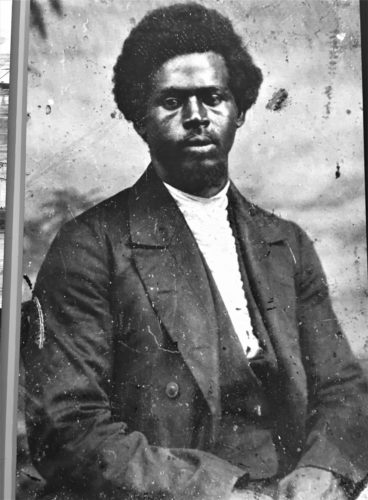
Robert Smalls
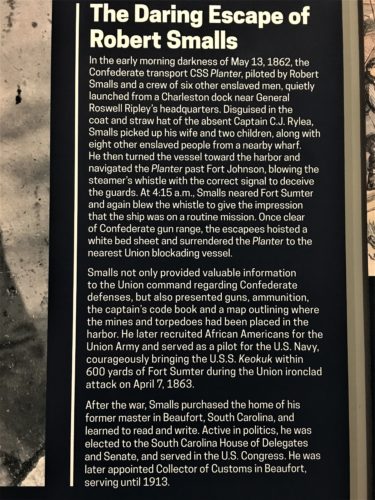
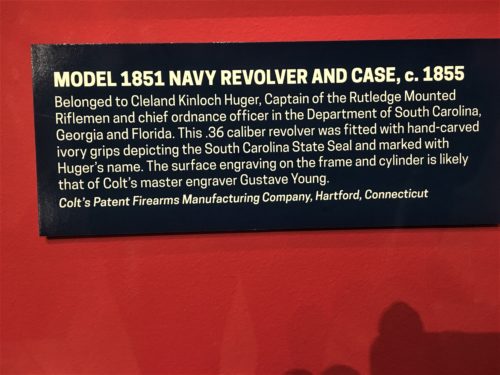
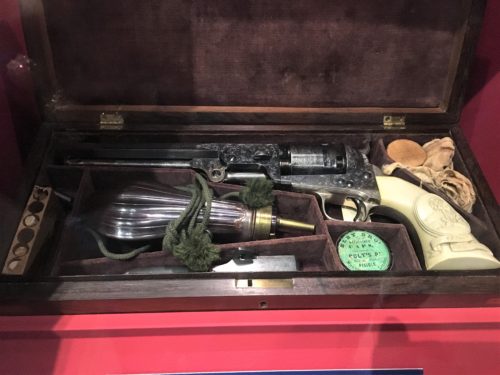
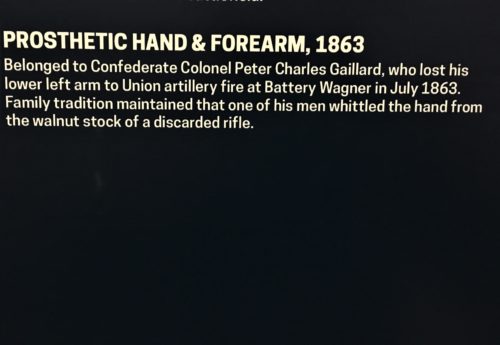
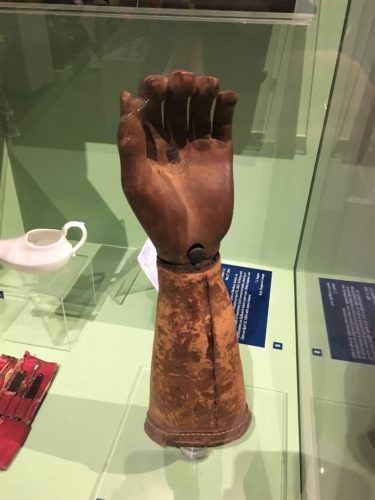
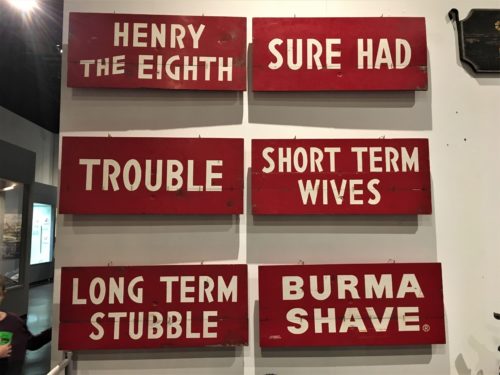
Remember the Burma Shave signs? Or at least remember hearing about them?
They first appeared in Minnesota in 1926 and ran until 1963.
They were placed to be best read when traveling 35mph.
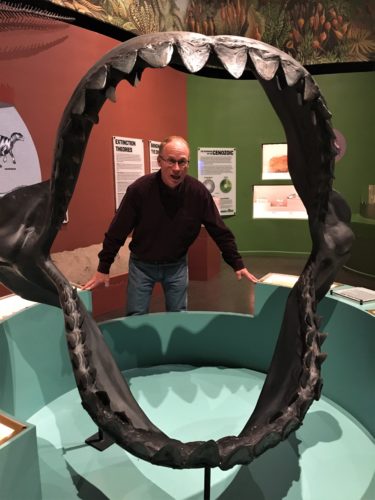
Shark jaw!
But we didn’t take a picture of it’s details, and we can’t remember.
I guess the most important thing is . . . . .
it’s really big!
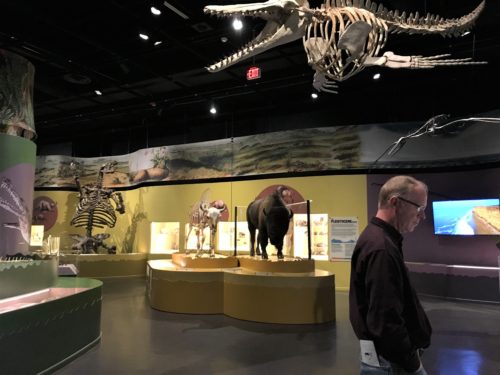
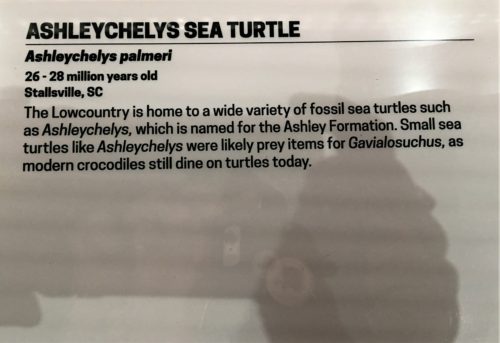
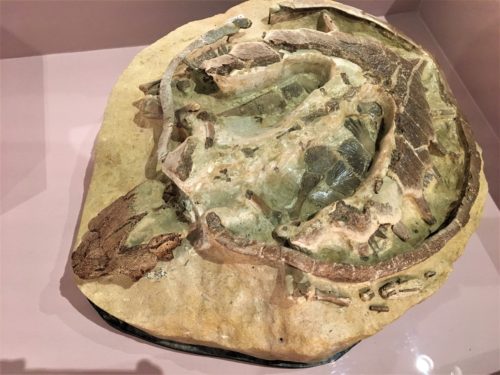
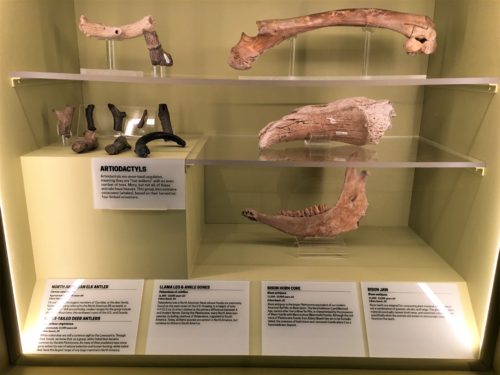
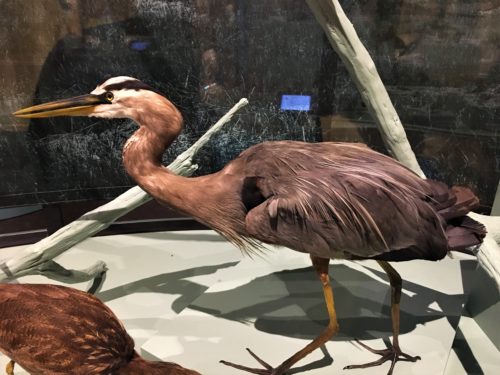
Hey, what can I say . . .
it’s probably the closest we’ll ever get to one of these. : )
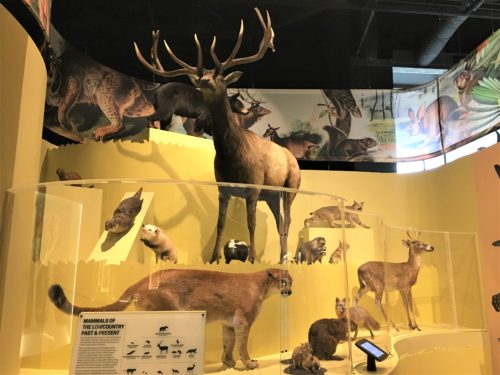

We sure didn’t expect to find Egyptian stuff in here!
Nor polar bears, or giraffes!

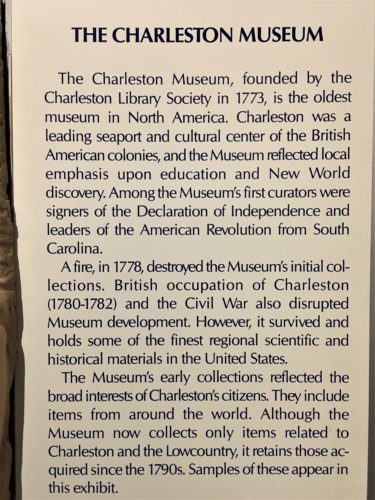
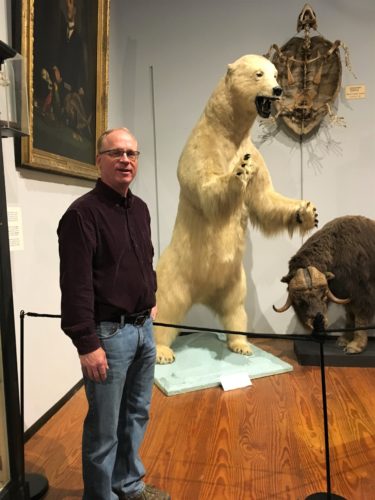
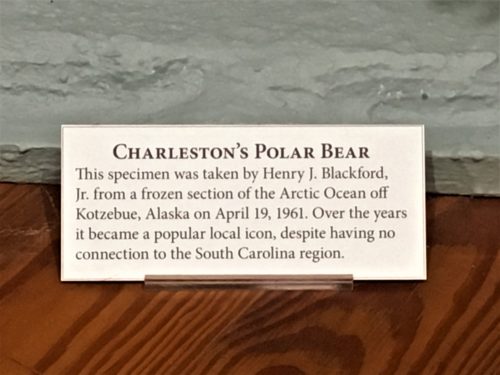
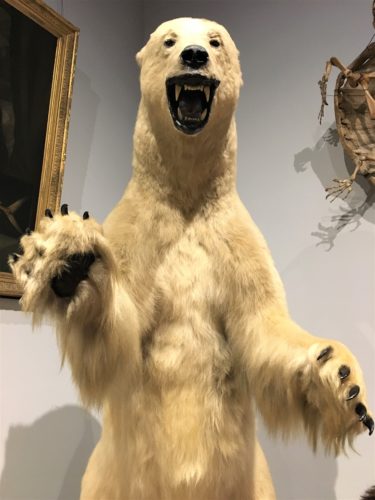
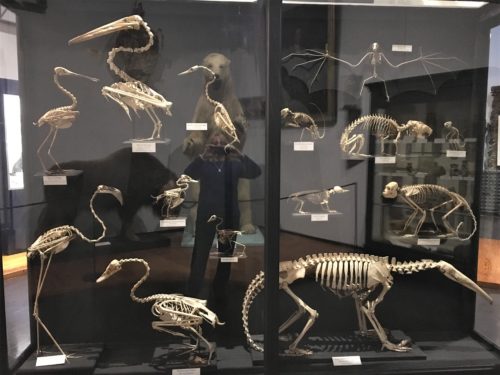
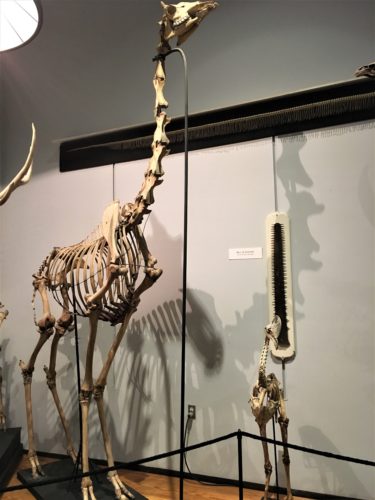
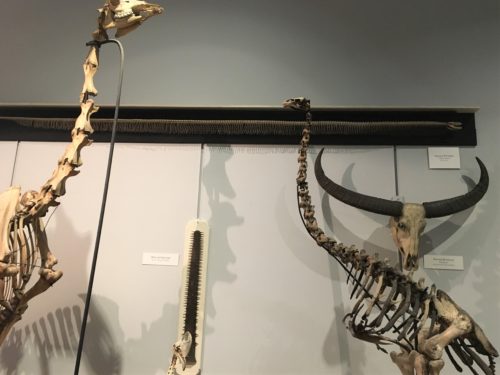
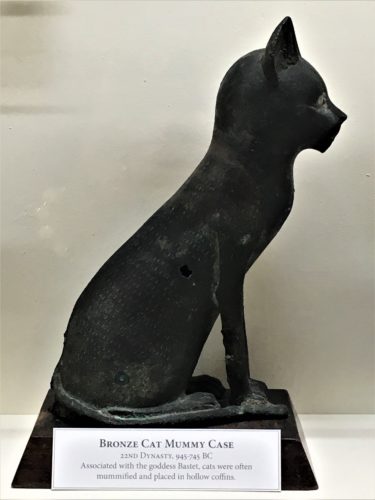
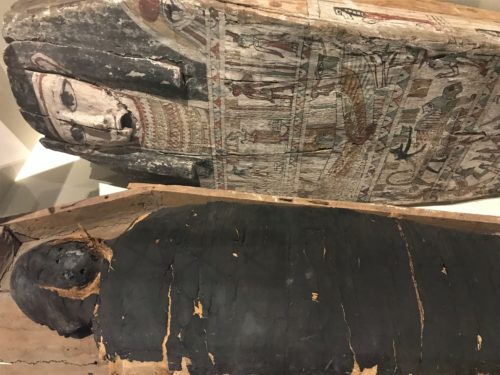
This is a real, honest to goodness, mummy!
Never thought we’d get to see one of those!
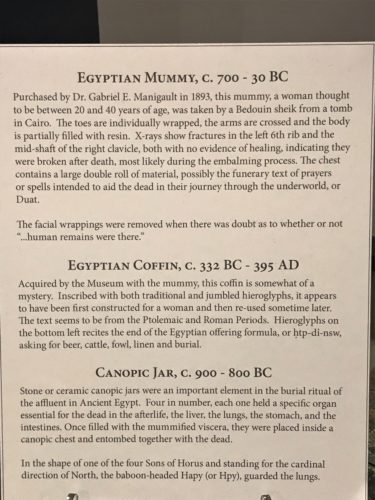
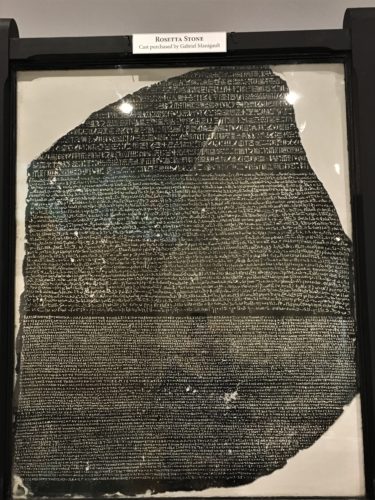
This is a copy of the Rosetta Stone.
It was the key to unlocking ancient Egyptian hieroglyphic script because it contains the same decree in hieroglyphics, another Egyptian script and Ancient Greek.
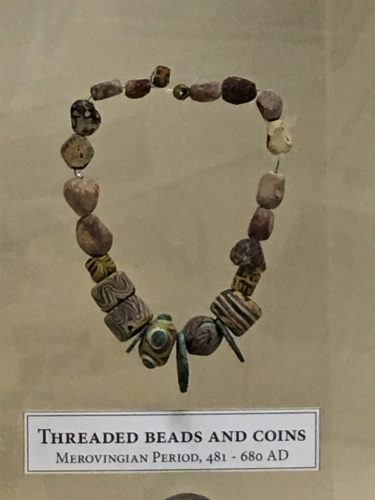
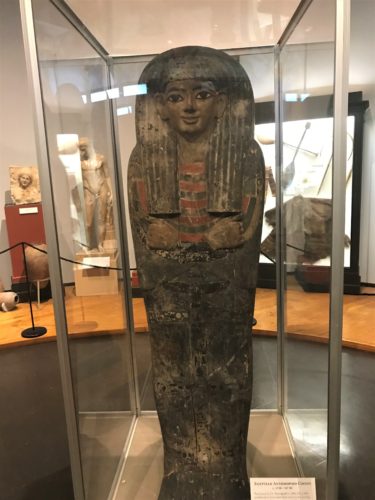
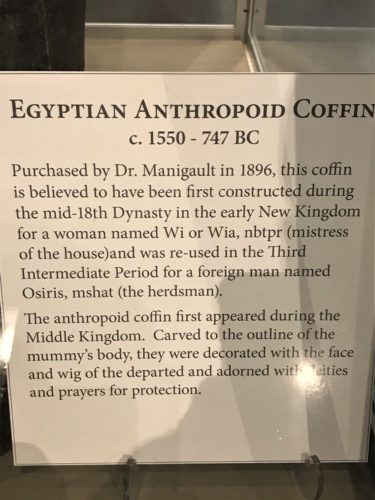
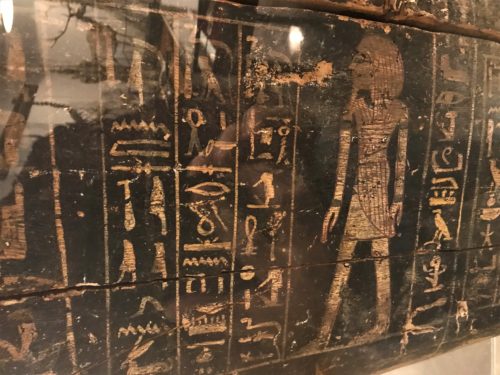
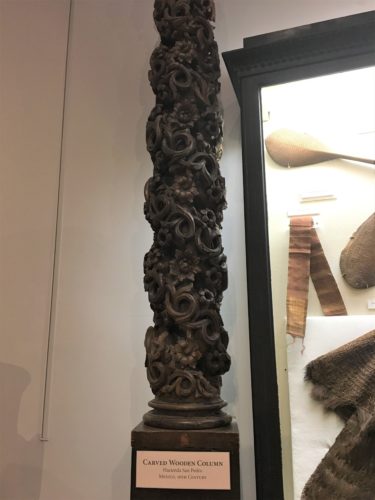
This pole was so tall, I couldn’t fit it all in the picture.
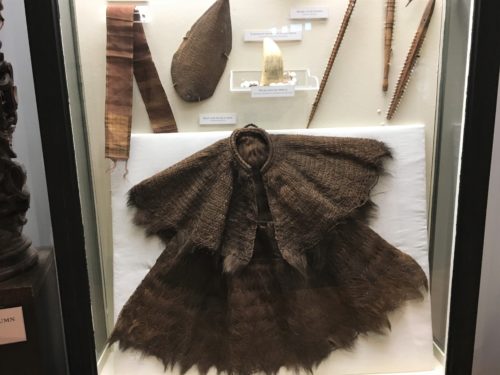
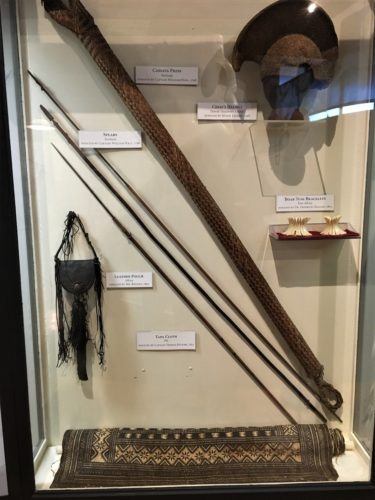
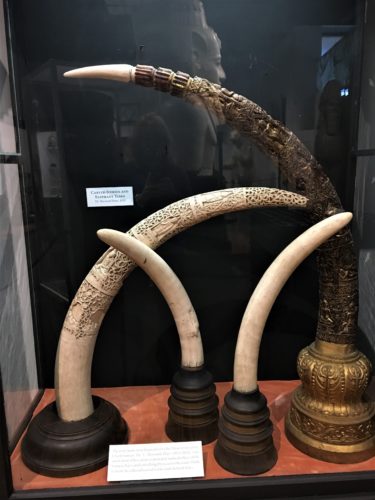
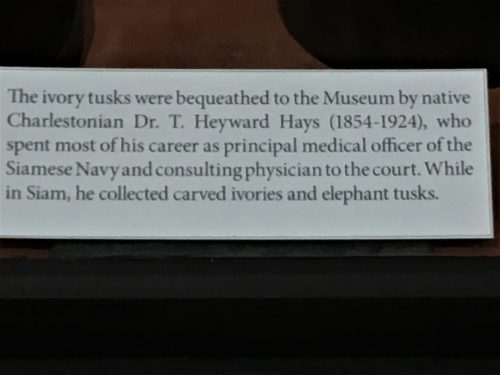
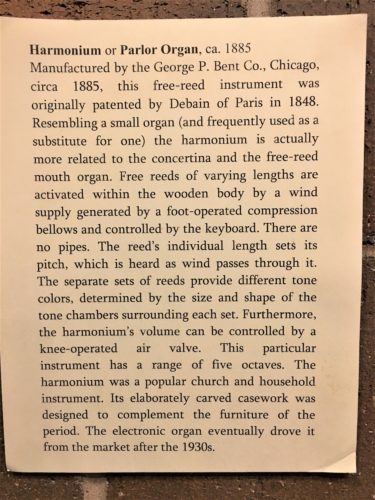
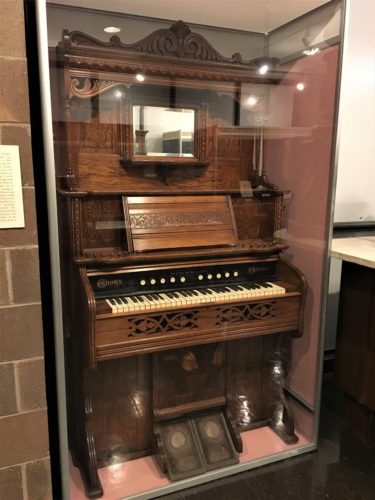
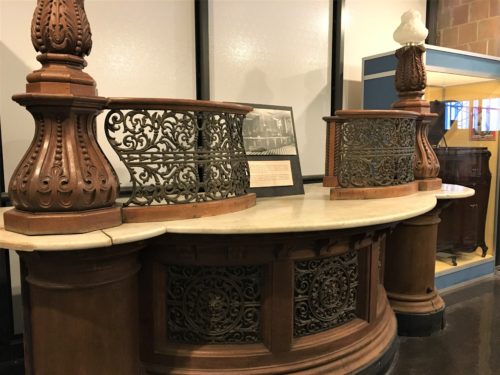
We thought it was so nice that they preserved a portion of this!
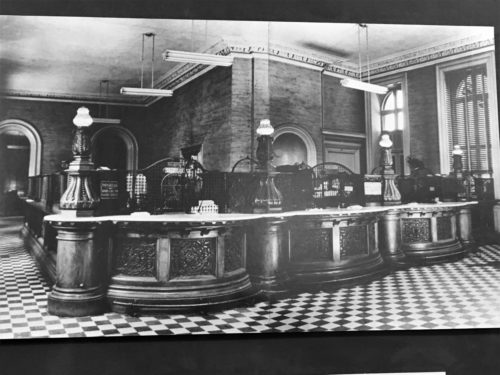
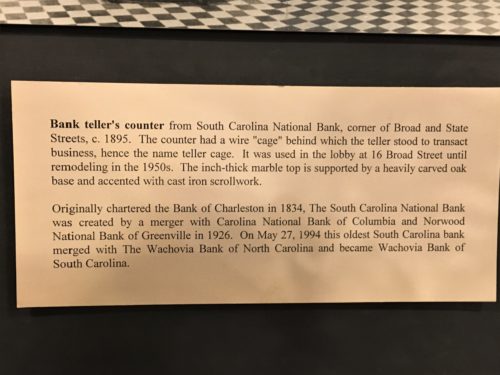
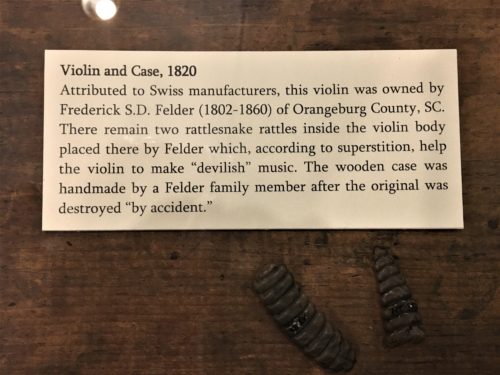
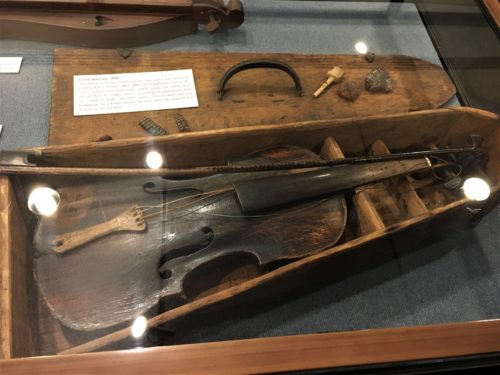
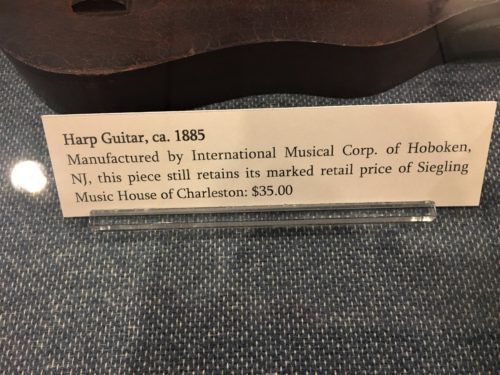
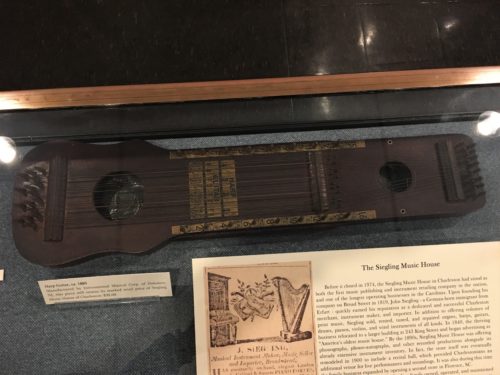
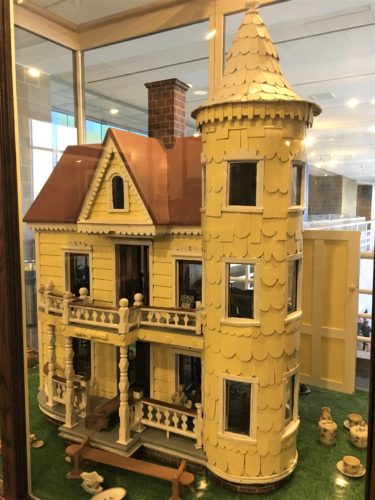
Note the teeter-totter type board out front.
After we left here, we ran across one of those joggling boards, and since we’d learned about it in the Museum, we actually knew what it was!
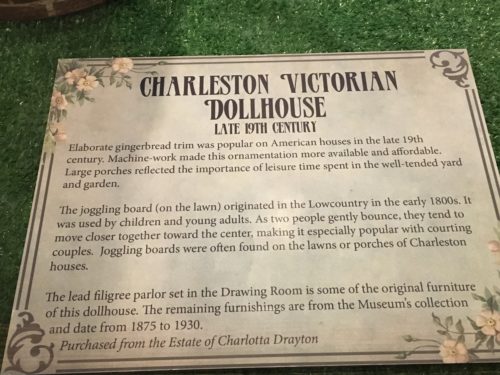
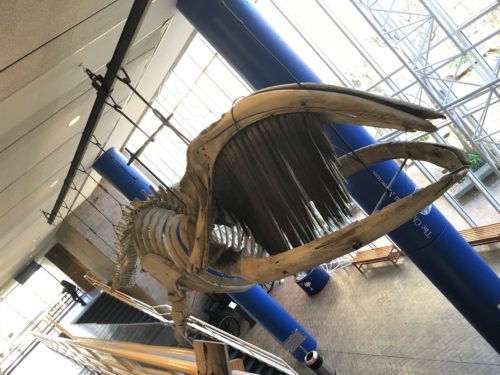
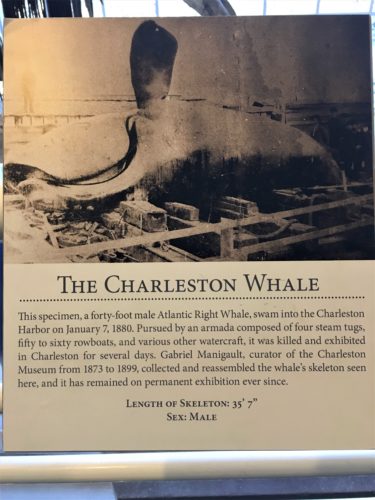
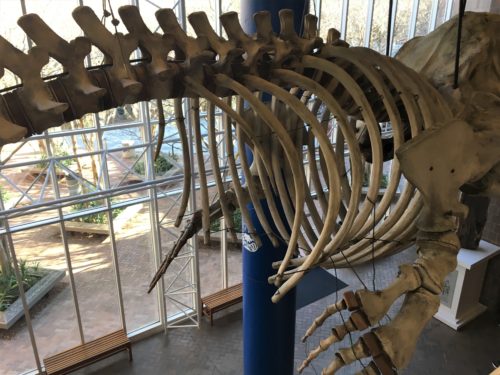
I guess we never realized that whales had ‘finger bones’!
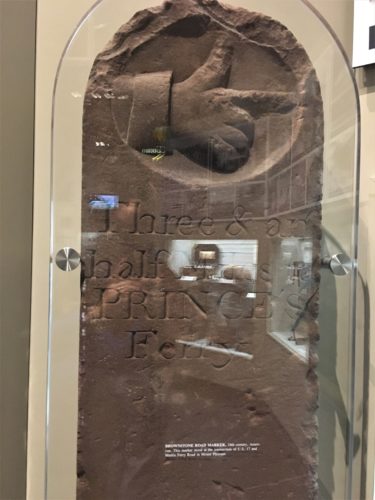
This is an old road sign.
Too bad the glare was such that we couldn’t get a really good picture . . .
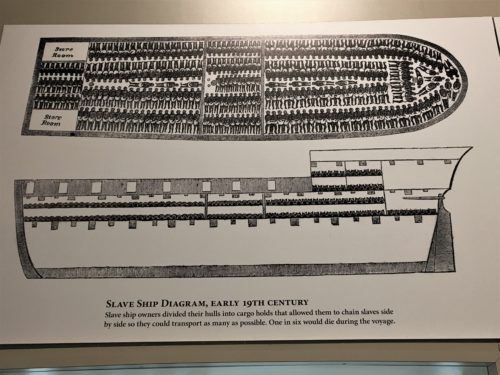
Look at that! How simply awful!
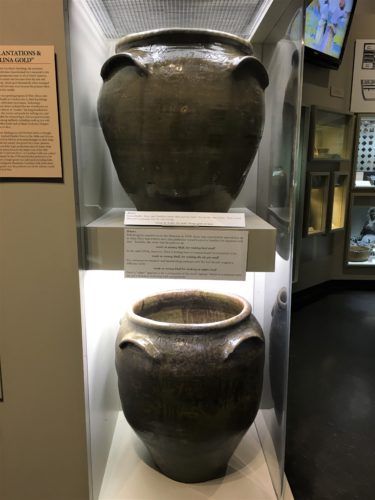
These jars were enormous!
I hope they were for decorative purposes, because they’d be really heavy, even if they were empty, let alone full!
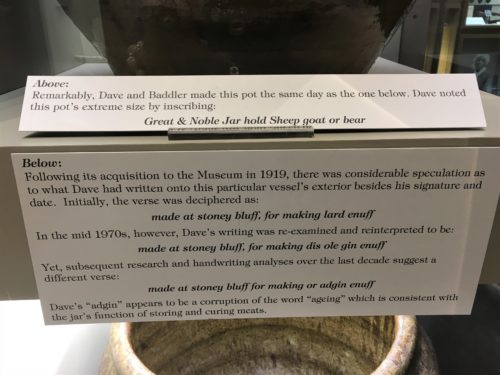

Well, whoda thunk??
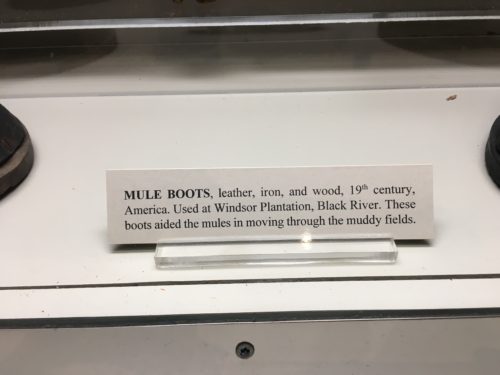
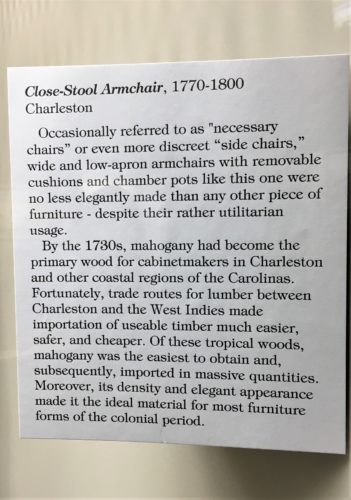
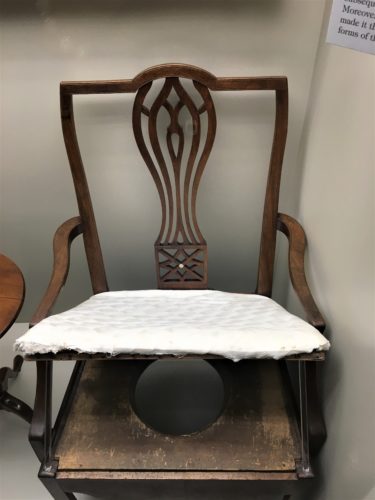
That’s some potty!
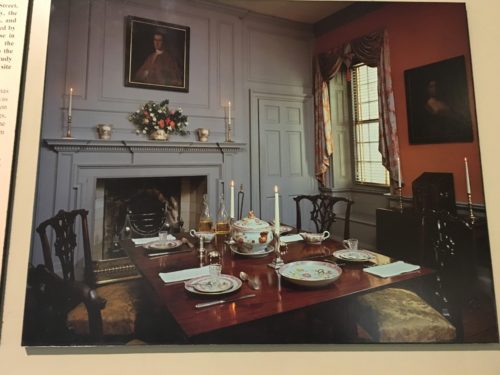
Compare this photo in the Museum to the one we took at the actual house. . . .
of course theirs is better!
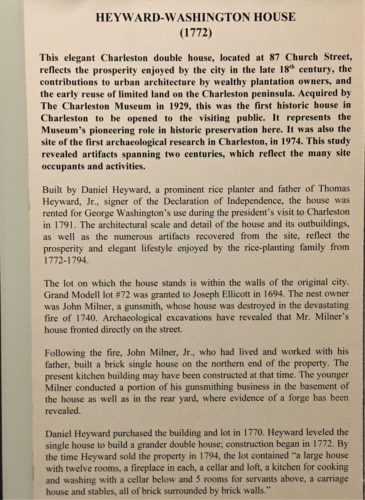
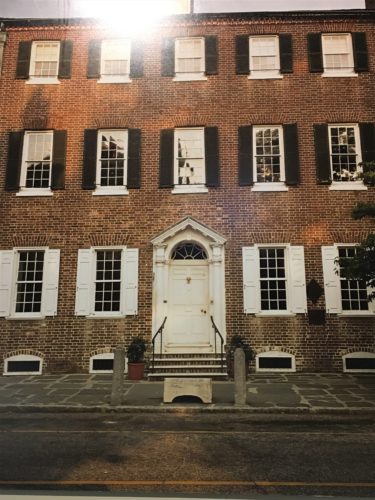
The Museum’s picture of the front of the house is better too. : )
When we left, we walked across the street to take in another part of our admission – the Joseph Manigault House. (It’s pronounced MAN-eh-go)
This home was only open today until around noon and then they were closing it to the public for ‘a tea’. Perfect timing for us, because not only were we there in time for the last tour, but someone (whomever was hosting the tea) had come in yesterday and decorated it with fresh flowers and greenery!
According to the brochure the museum gave us,
One of Charleston’s most magnificent antebellum structures, the Joseph Manigault House, built in 1803, reflects the urban lifestyle of a wealthy, rice-planting family and the enslaved African Americans who lived there. A National Historic Landmark, the Joseph Manigault House is an exceptional example of Federal period architecture. Inside, a striking spiral staircase accents the impressive central hall, and many of the rooms are restored to their original color schemes. All feature historic pieces from the Museum’s collections including a selection of American, English and French furniture dating to the early 19th century.
For our part, we learned about how important symmetry was in building the house. There are doors that go nowhere and don’t have hinges or knobs, but are put there solely for the purpose of matching the actual door on the other side of the fireplace, room, whatever. They also have windows that are put in and then bricked up on the outside for the same reason. Weird. But common for the time.
We were also in luck because the theme of the tea this year was the poinsettia, so there were little typed-up information cards sitting all around the house.
Do you know where the flower got its name?
It was named after the man who ‘discovered’ it – Joel Poinsett. Here’s some history on the guy:
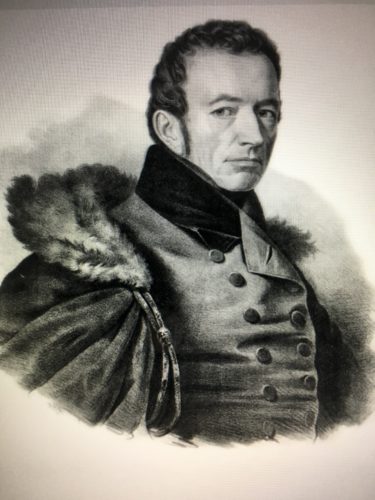
Joel Roberts Poinsett
1779-1851
Joel R. Poinsett, in full Joel Roberts Poinsett, (born March 2, 1779, Charleston, South Carolina, U.S.—died December 12, 1851, near Statesburg, South Carolina), American statesman noted primarily for his diplomacy in Latin America. A fervent liberal, he frequently meddled in the affairs of Latin American nations, incurring their animosity by his misdirected good intentions.
The son of a prominent South Carolina physician, Poinsett was educated in the United States and England and then traveled for seven years in Europe and western Asia. Returning home to serve in the approaching war with England, he was instead appointed the special agent for the United States in Buenos Aires and Chile in 1810. Although he initiated diplomatic and commercial relations with those territories, he also supported the nascentrevolutionary forces there.
After serving in the South Carolina legislature (1816–20), Poinsett was elected to the U.S. House of Representatives in 1820. He interrupted his legislative career to go on a special mission to Mexico in 1822 and 1823, publishing an account of his experiences in Notes on Mexico in 1824. In 1825 he became the first U.S. minister to Mexico, a post he held until 1829. Deeply involved in Mexican politics, he finally became persona non grata to the Mexican government. The Mexicans even coined the word poinsettismo to characterize his officious and intrusive behaviour.
In 1830 Poinsett became a leader of the Unionist Party in South Carolina, a group that opposed the doctrine of nullification, which held that the individual states have the right to set aside any federal law that violates their compact in the U.S. Constitution. As a reward for those services, President Martin Van Buren appointed him secretary of war in 1837. He used his position to authorize an expedition in 1838, led by French scientist Joseph Nicholas Nicollet with the assistance of American explorer and military officer John C. Frémont, to survey and map the region between the Mississippi and Missouri rivers. Poinsett also authorized an expedition by the explorer Charles Wilkes that reached Antarctica and sailed through the South Pacific Ocean and along the western coast of North America. Poinsett served until 1841 and then retired to his plantation in South Carolina, where he opposed the growing secessionist movement in his state.
An accomplished amateur botanist, Poinsett brought a flower from Mexico that was renamed the poinsettia in his honour. He was instrumental in founding the National Institute for the Promotion of Science and the Useful Arts, a precursor of the Smithsonian Institution. ~ from Encyclopedia Britannica
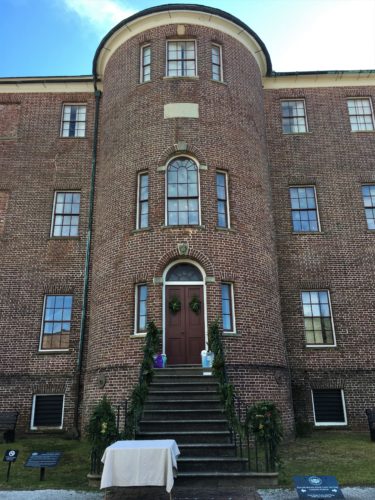
This is our picture of the front, but we didn’t go in here.
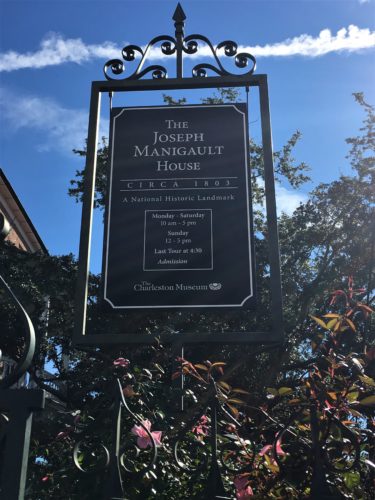
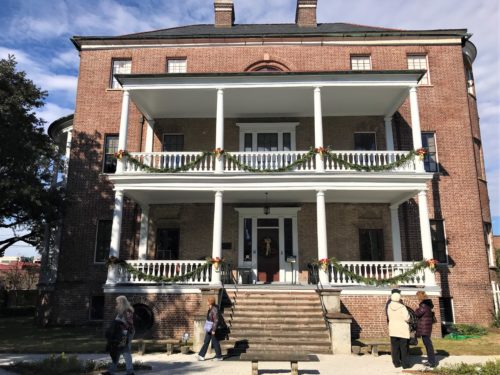
That’s the back entrance where we went in and out for our tour
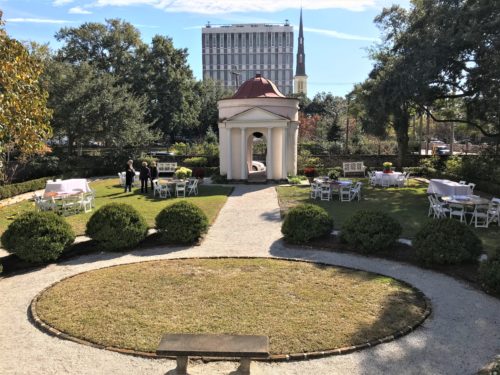
The view from the back door
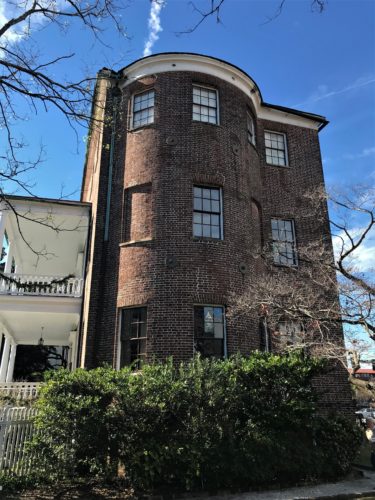
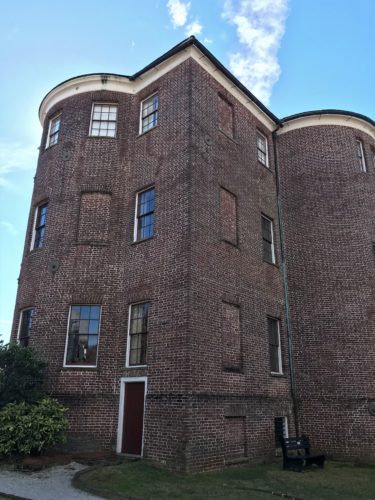
Notice the symetry?
The windows that are there, but bricked in? That’s original, so the window areas matched, even though there were no windows there on the inside.
And the two rounded areas match too.
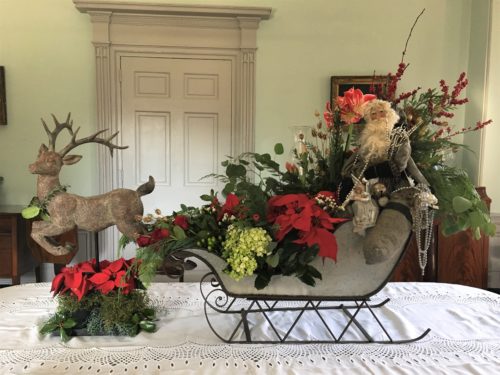
This is where we began our tour – – in the dining room.


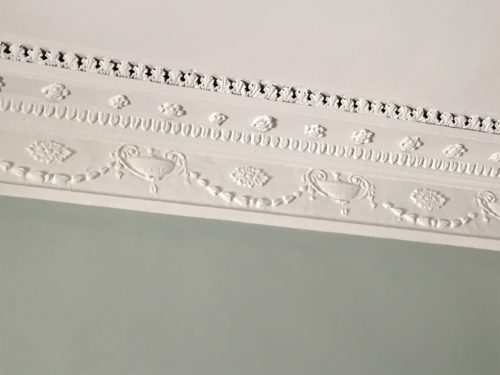
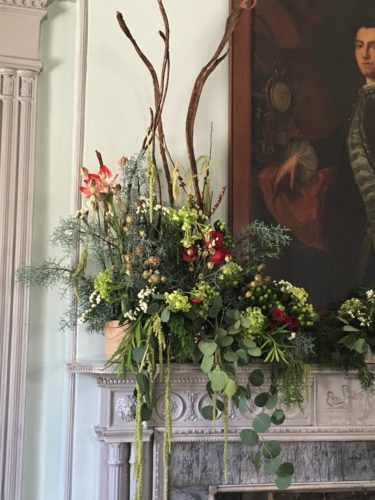
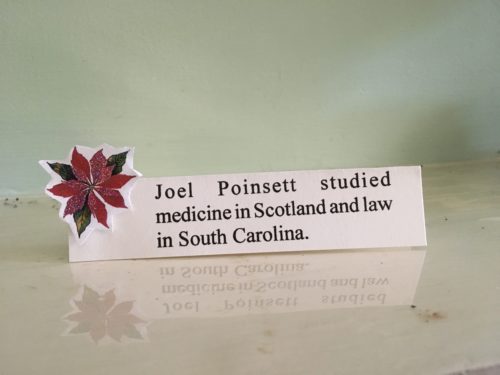
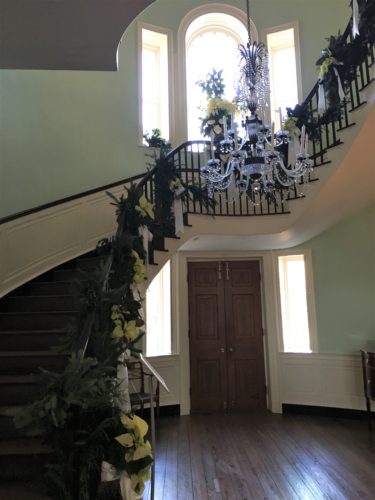
This is the suspended staircase, although they’ve sine anchored it for safety since the tours go upstairs.
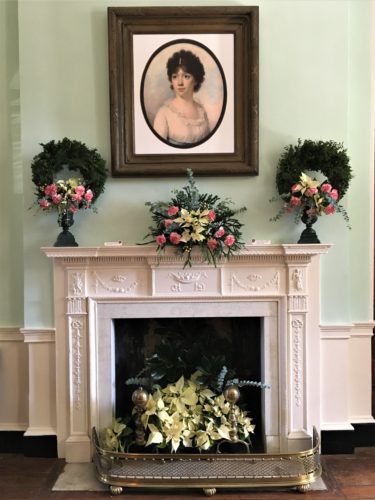
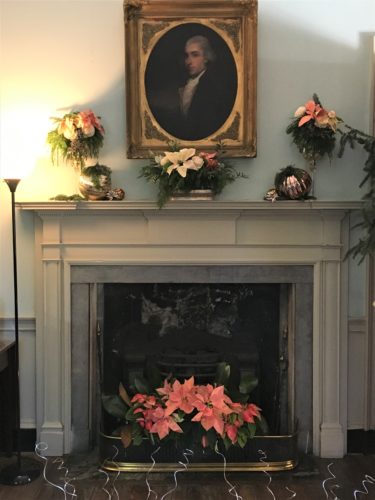
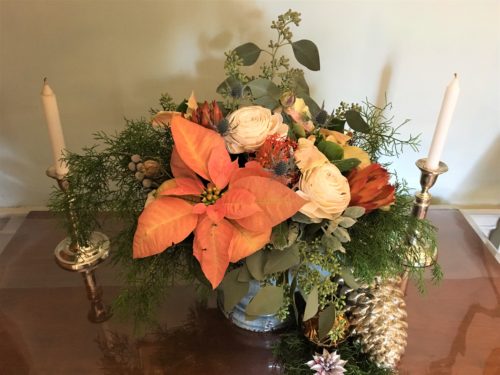
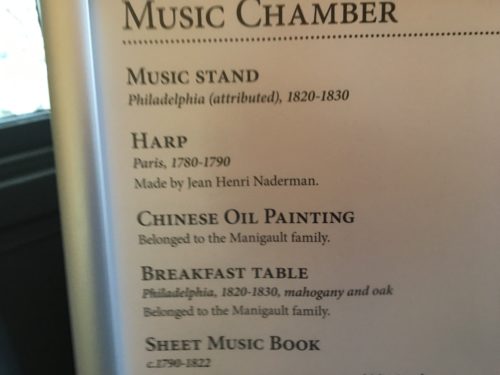
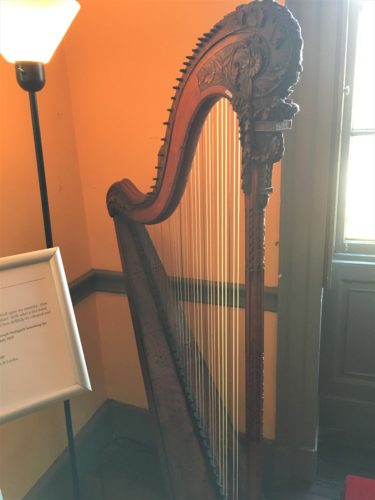
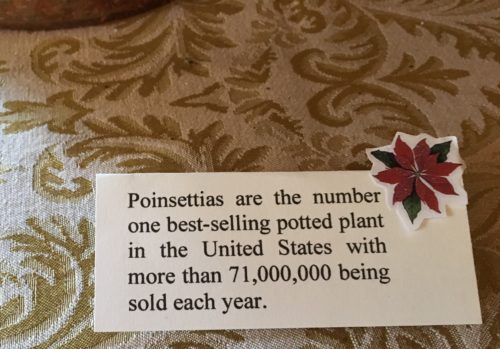
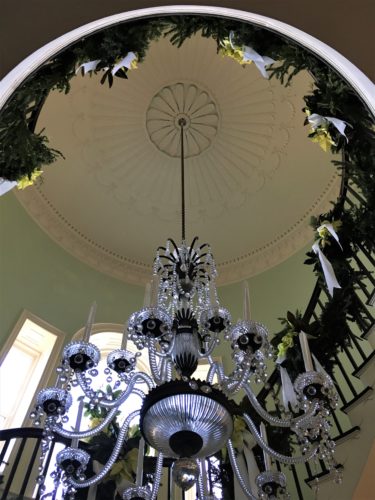
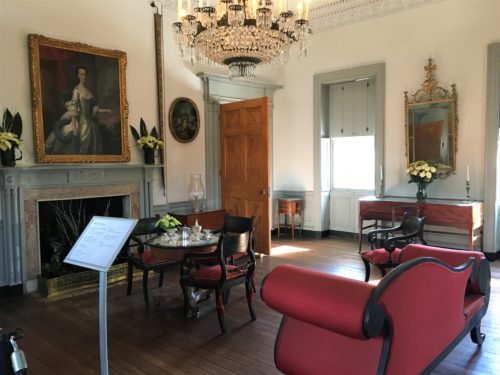
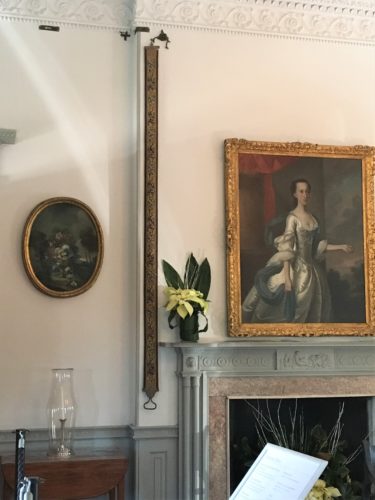
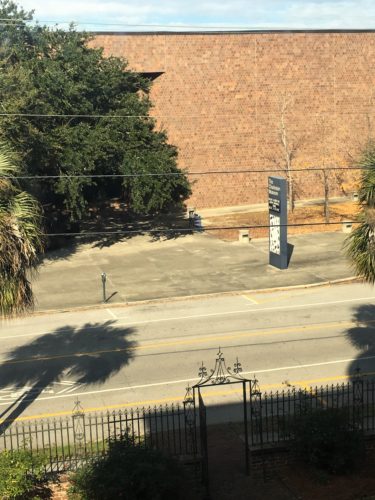
Looking from inside the house to the Charleston Museum
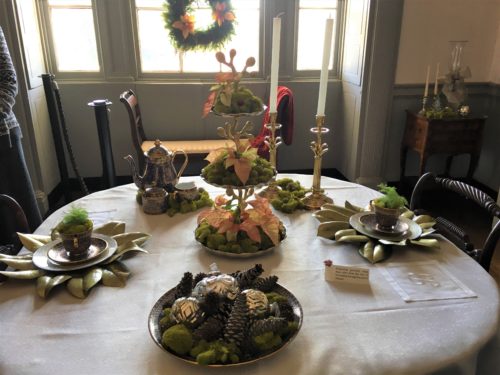
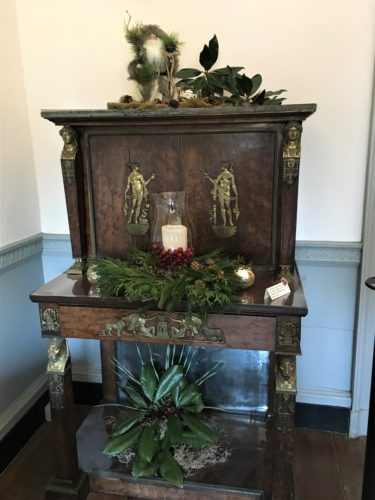
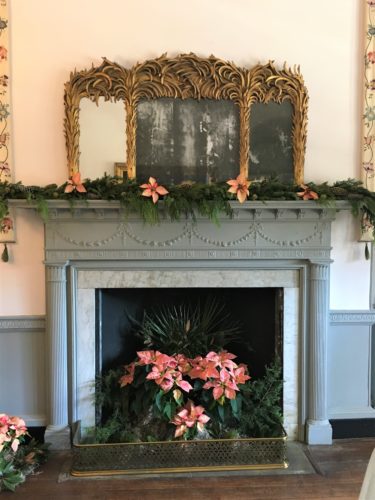
Identical bell-pulls, although only one was designed to actually work.
Symmetry, remember?
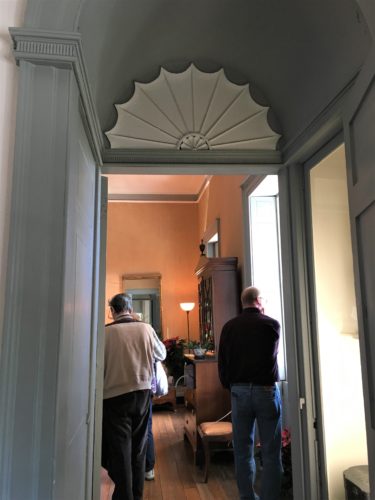
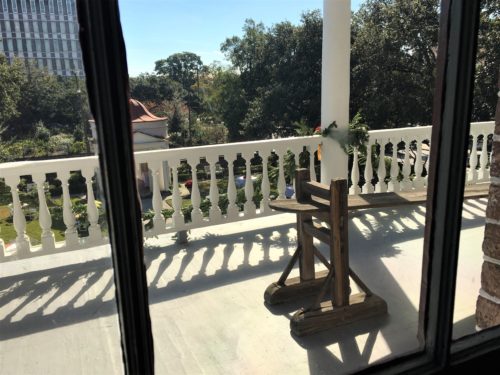
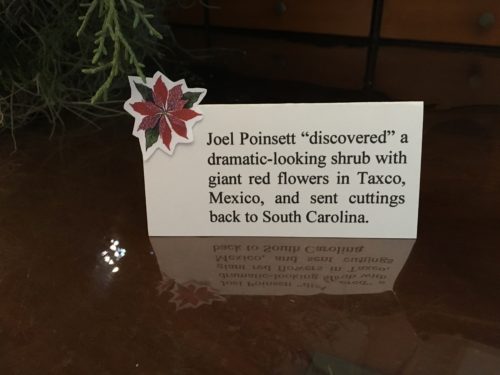
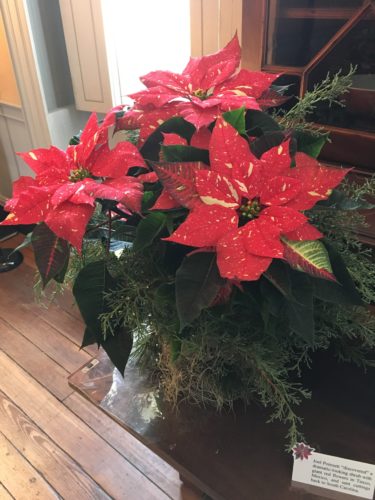
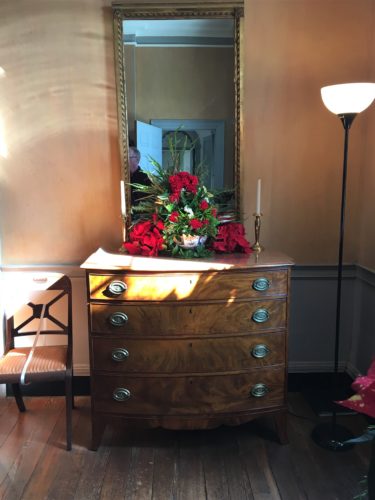
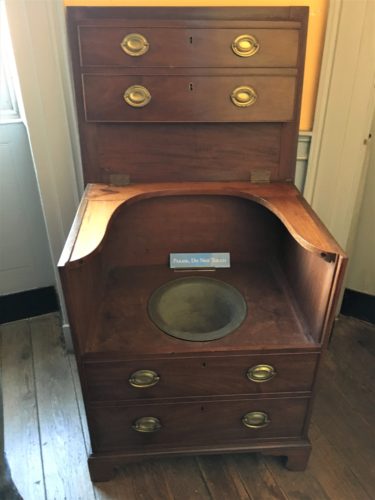
That’s quite a throne!
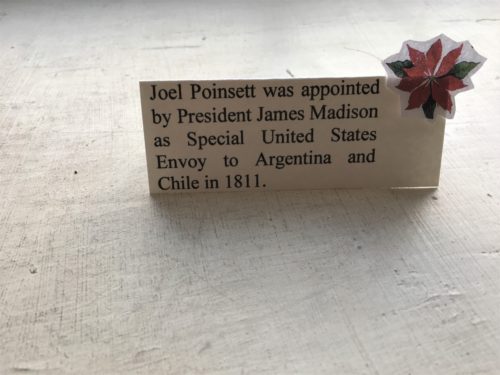
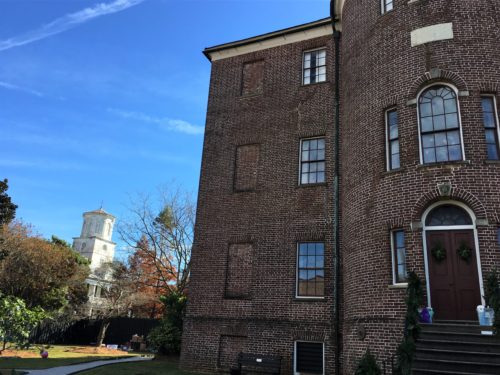
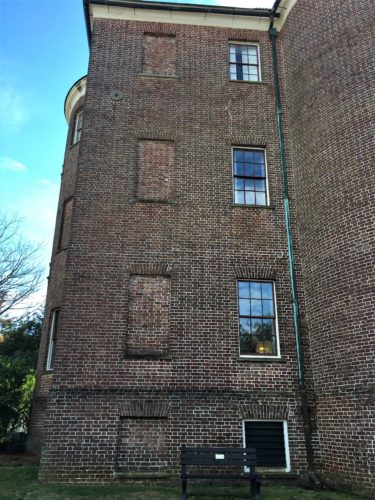
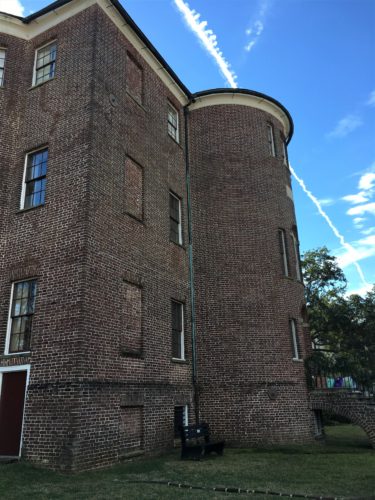
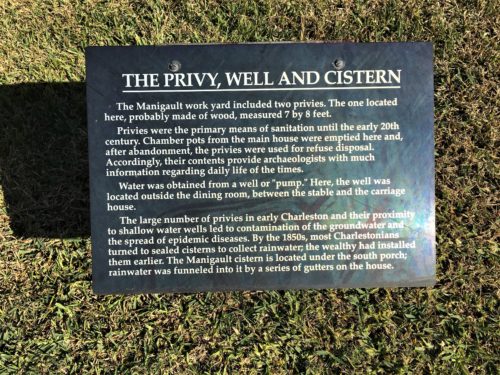
Information on the stuff that used to be in the back yard – actually the front and side yards.
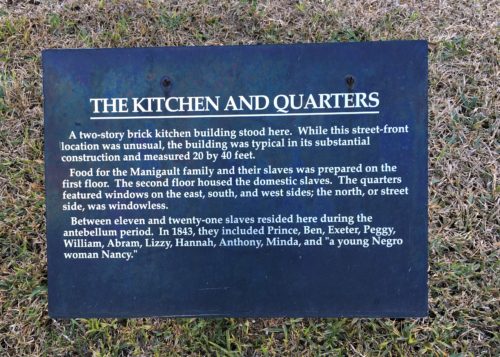

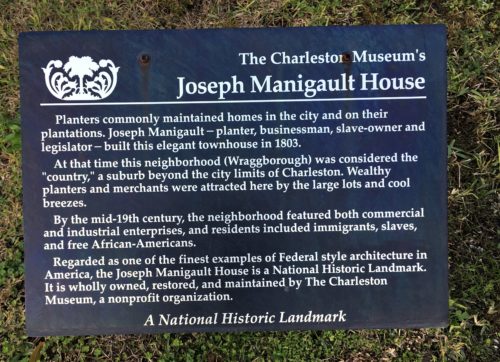
An hour and a half later, we revisited the Museum to check out the places we’d missed when we were chased out earlier. It was very quiet this time. Much like you’d expect a museum to be. 😊
Below is what the brochure has to say about the Museum:
The Charleston Museum is a “must see” for anyone interested in the fascinating history of the South Carolina Lowcontry. Founded in 1773, on the eve of the American Revolution, it is considered America’s First Museum and provides the most comprehensive overview of area history in Charleston.
The exhibits contain an unmatched display of artifacts from its Archaeology, Archives, History, Historic Textiles and Natural History collections, which together tell the story of the Lowcountry’s past.
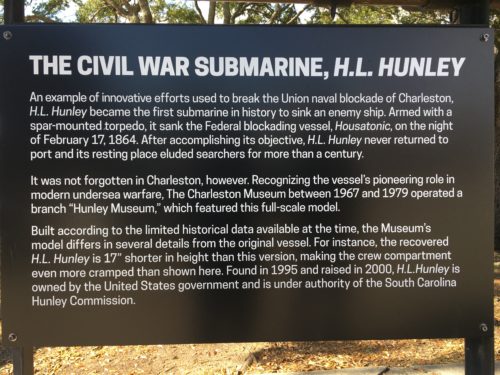
Back to the Museum!
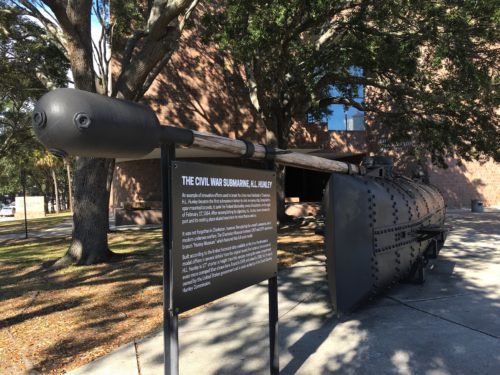
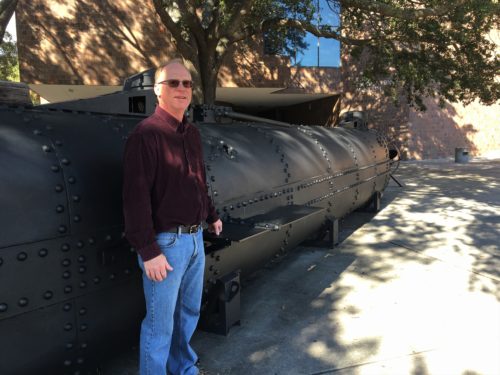
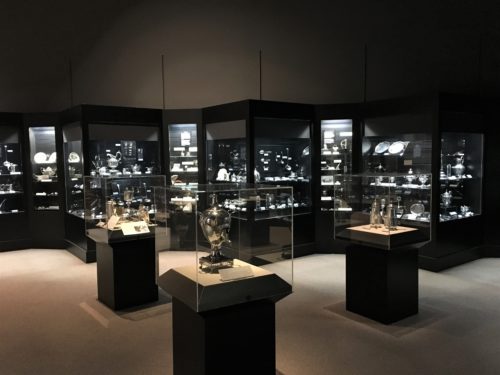
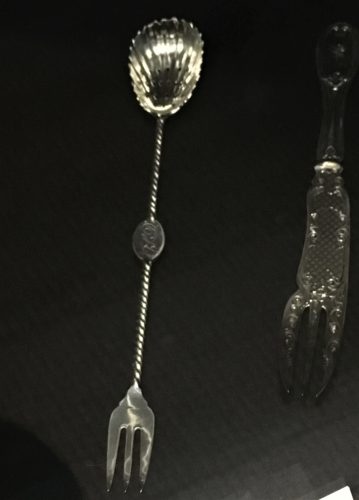
Do you know what this is?
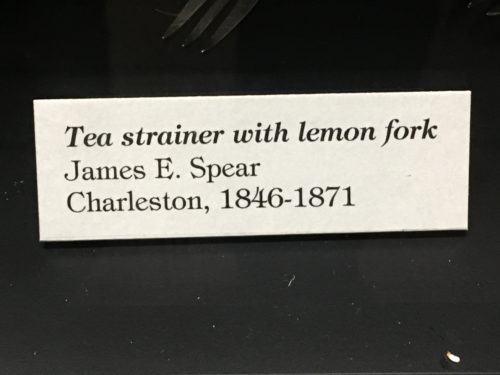
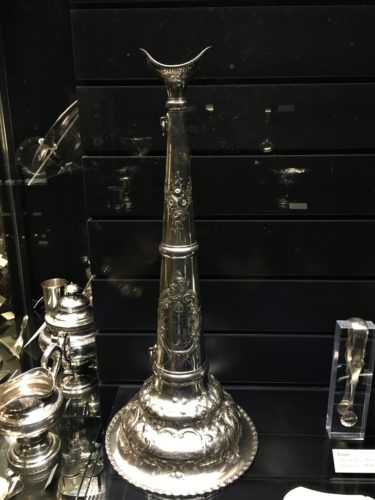
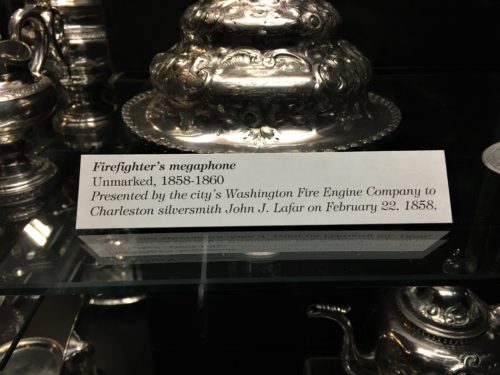
I’m confused.
The placard clearly says 1858, but the engraving says 1920 . . .
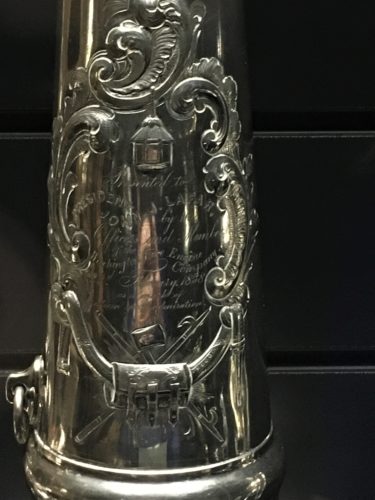
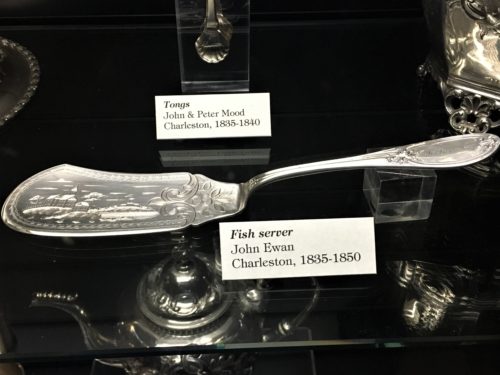
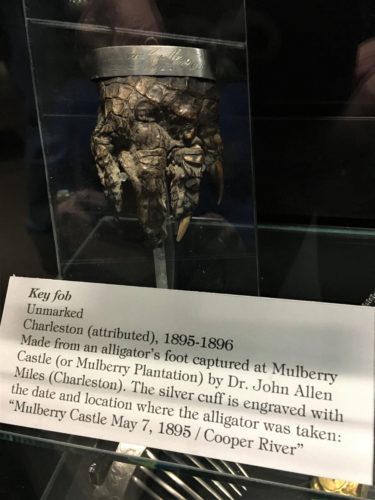
So this guy had this thing hanging from his pocket watch . . . ewwww . . .
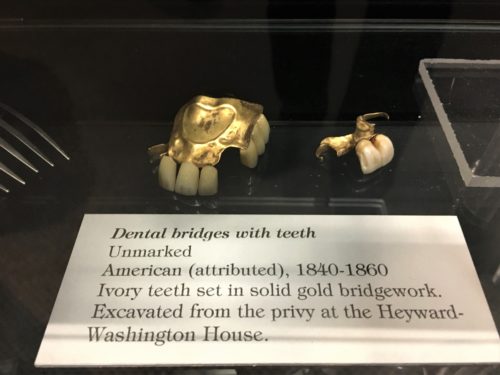
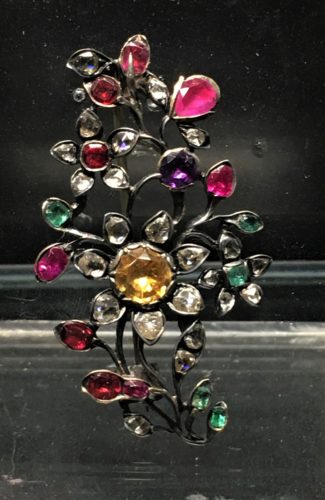
These are all real gemstones!
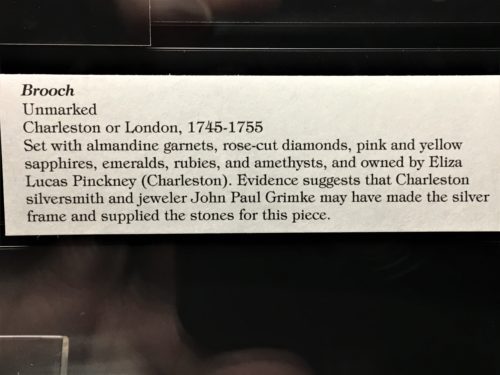
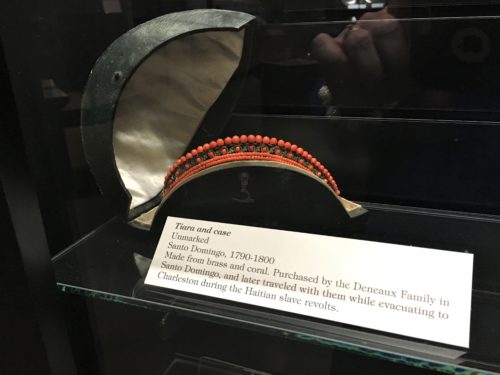
I don’t know about you, but my tiara didn’t come in a box . . .
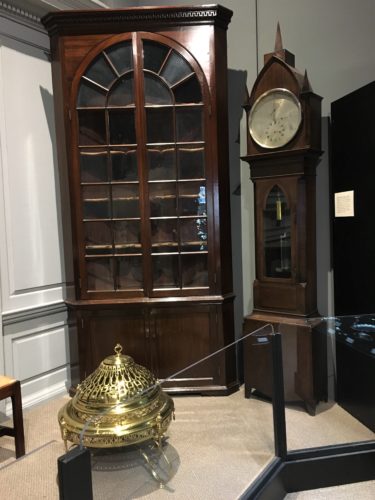
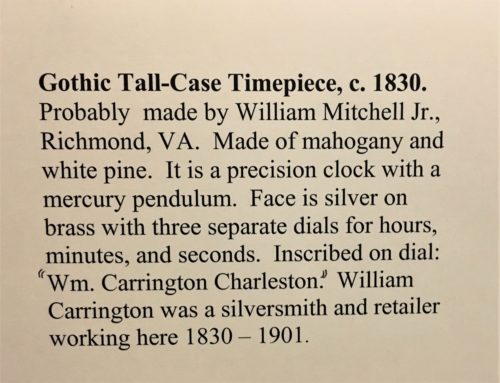
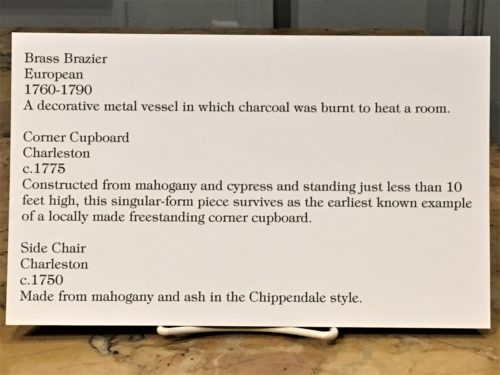
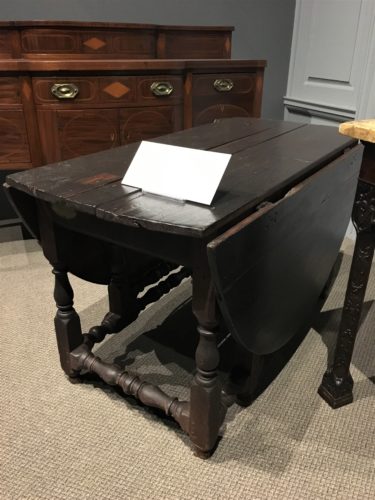
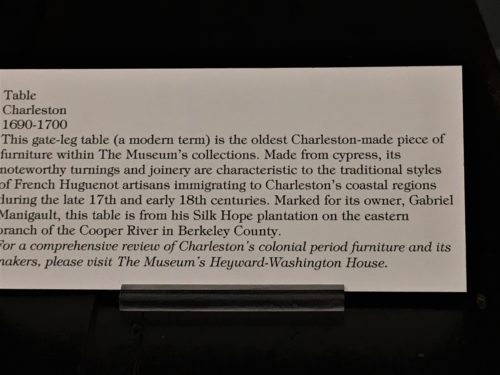
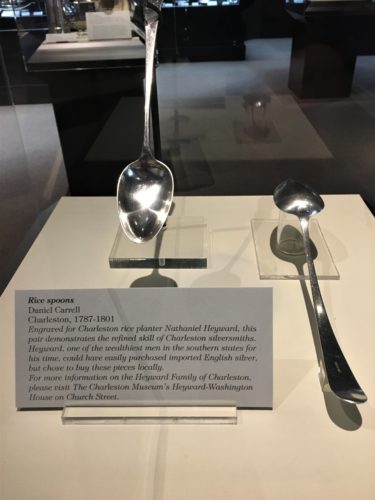
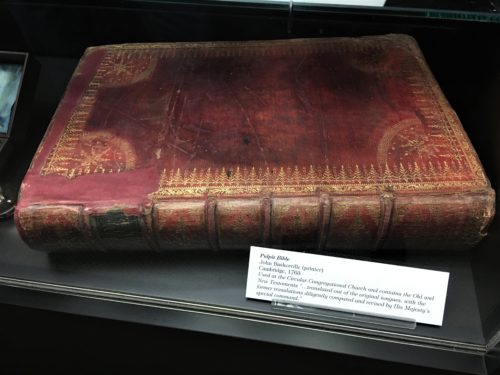
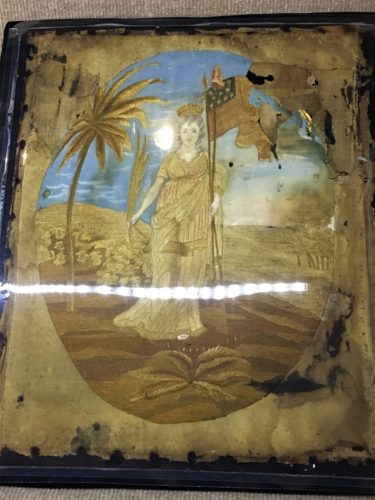
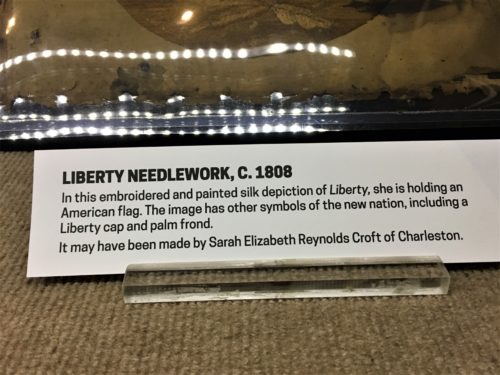
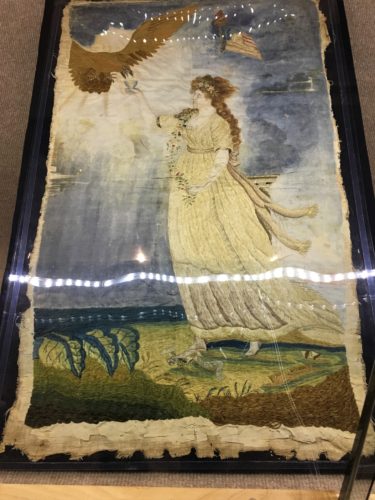
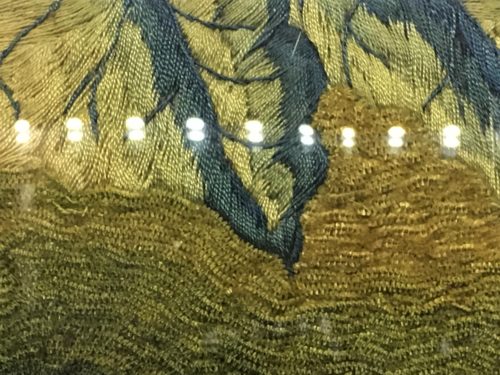
Look at the detail work on this!
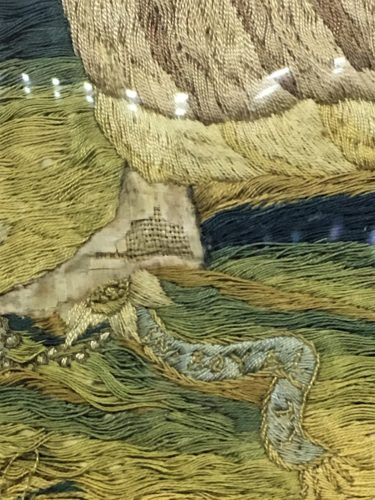
It’s deteriorating some.
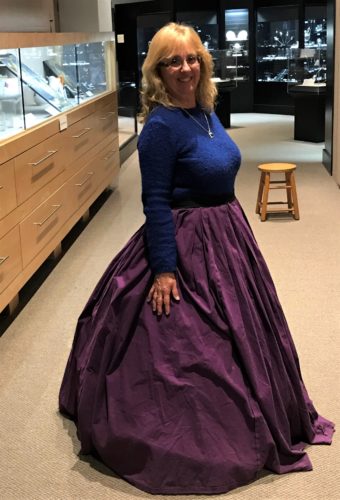
All dressed up and no place to go!
Fun to try on! Wouldn’t be fun to wear – especially in the summer!
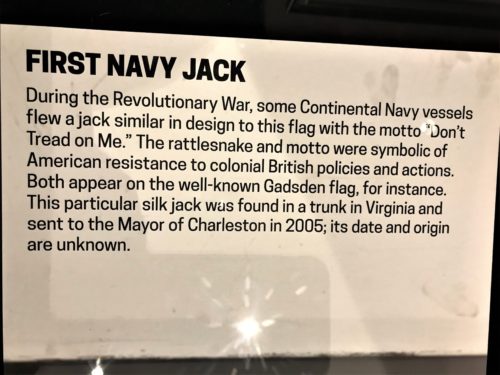
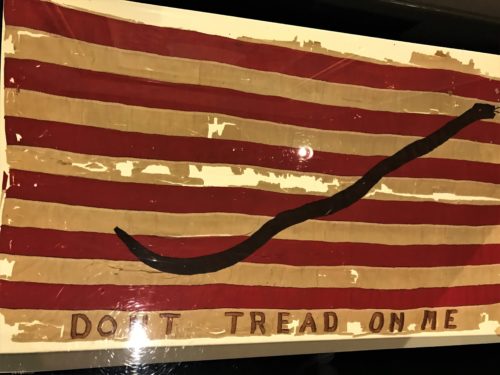
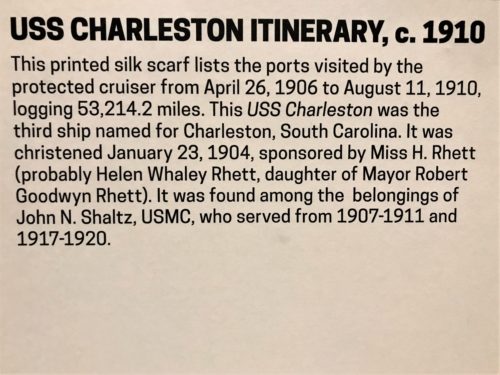
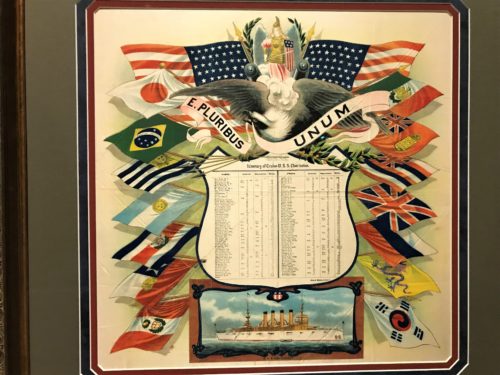
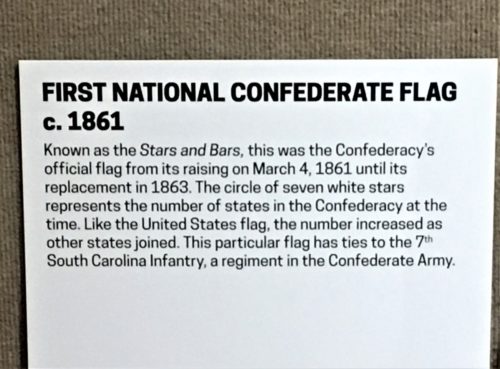
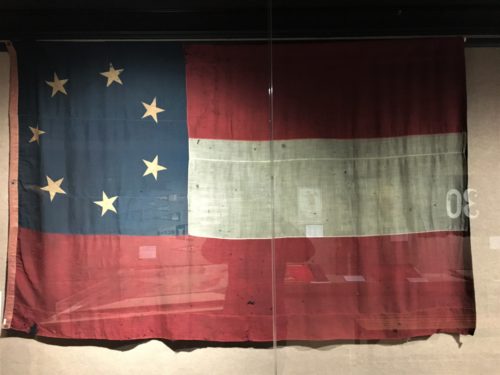
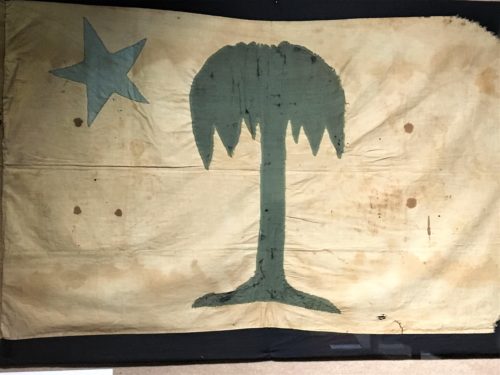
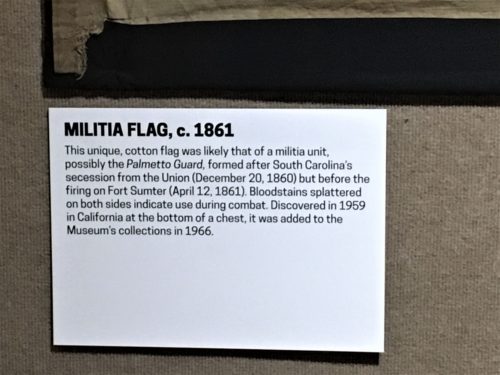
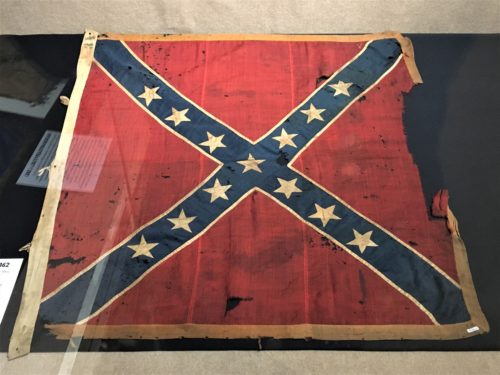
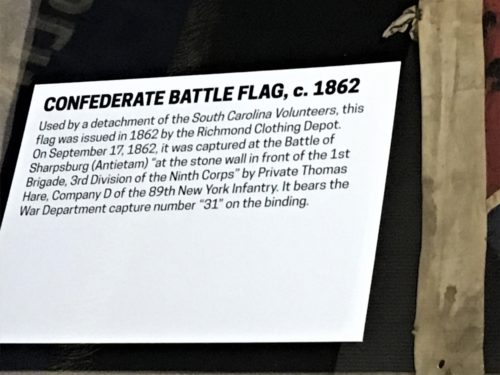
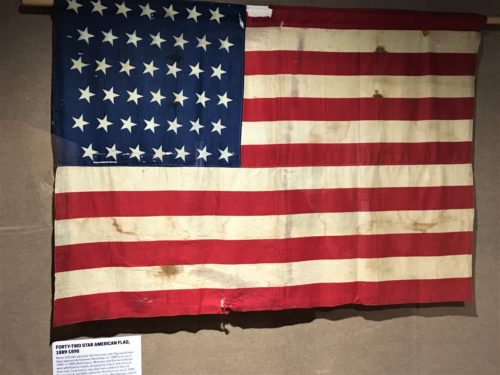
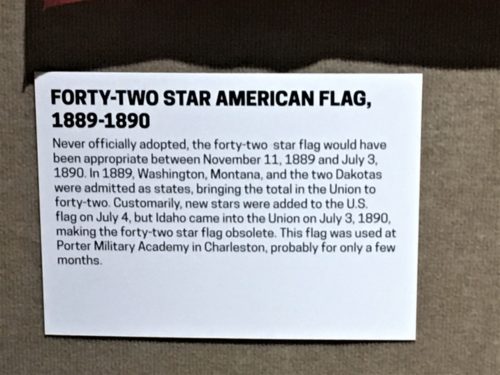
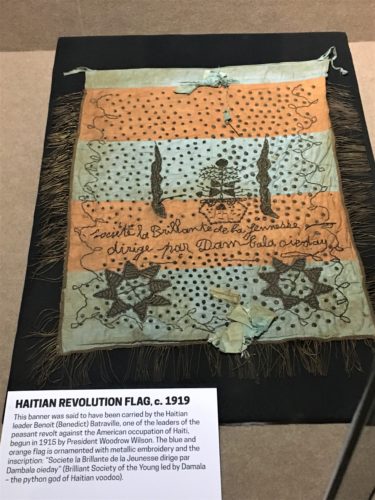
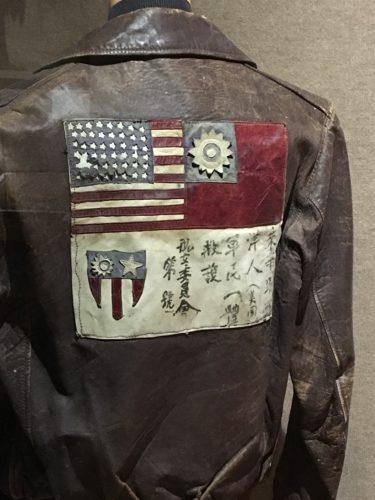
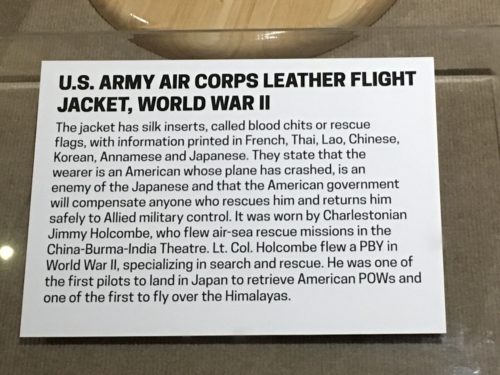
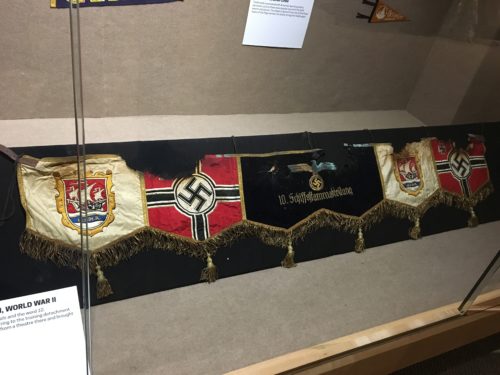
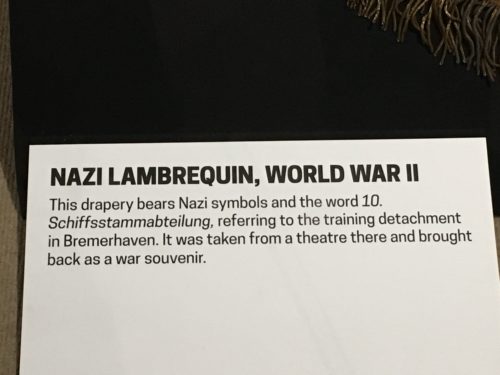
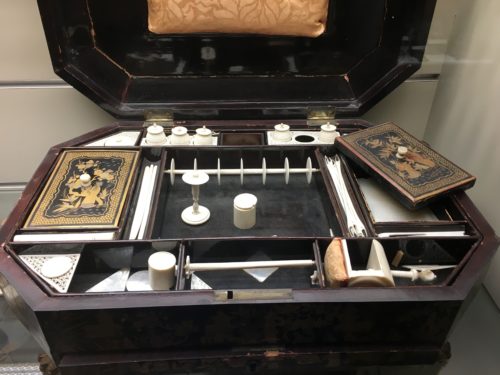
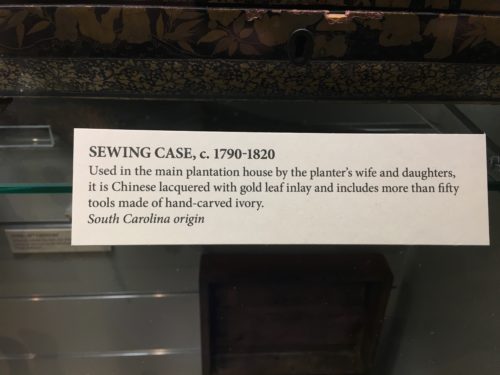
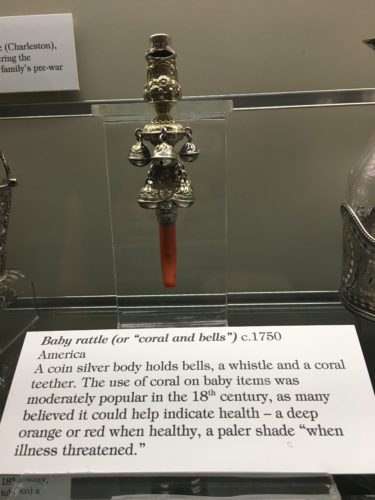
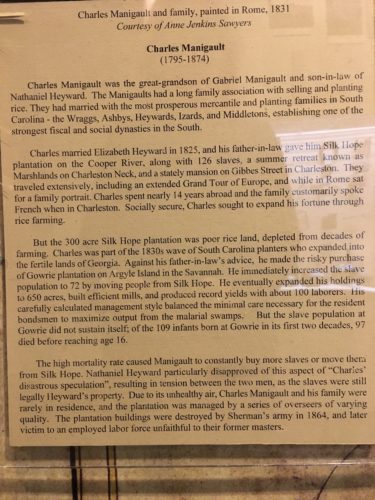
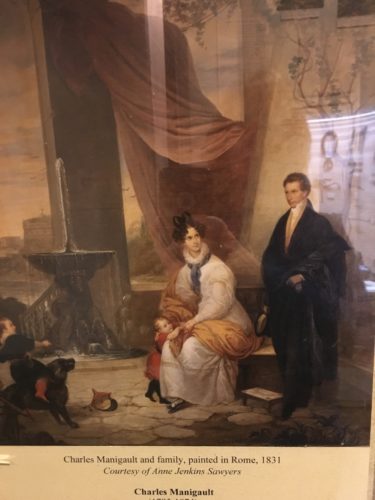
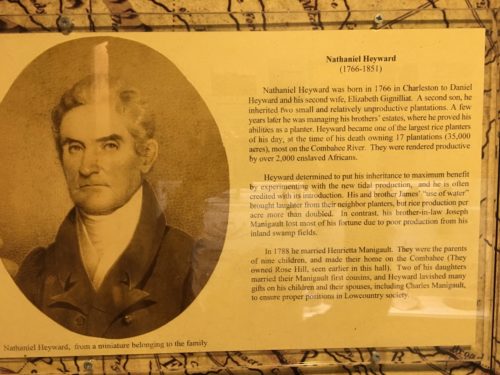
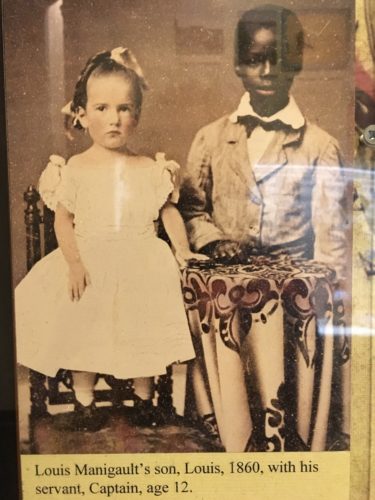
Yep. That’s a boy on the left. . .
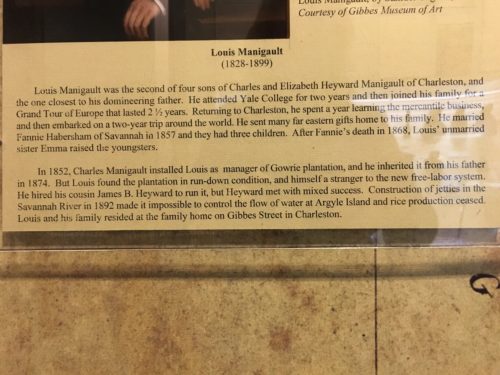
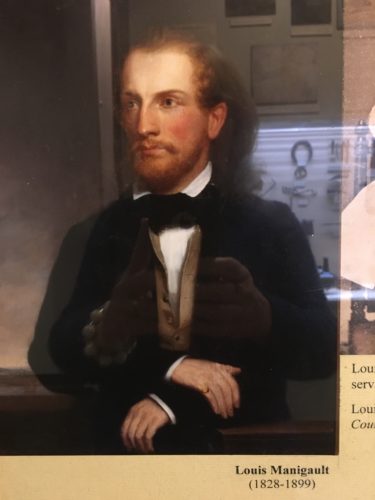
. . . And he grew up to be this man.
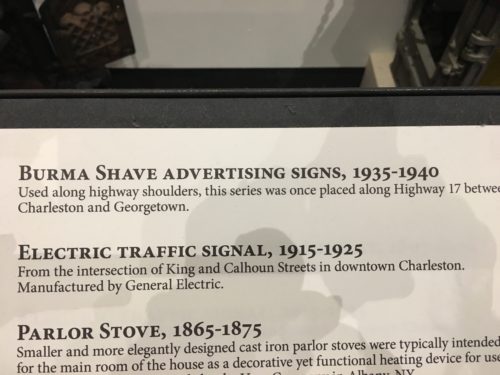
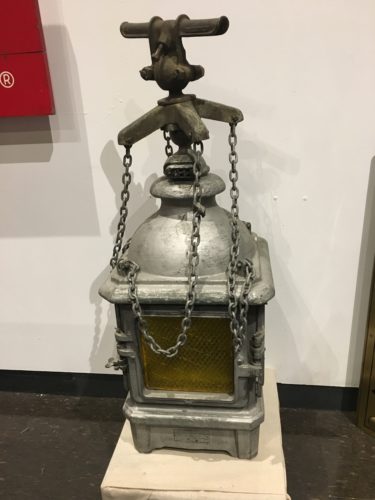
Traffic Signal
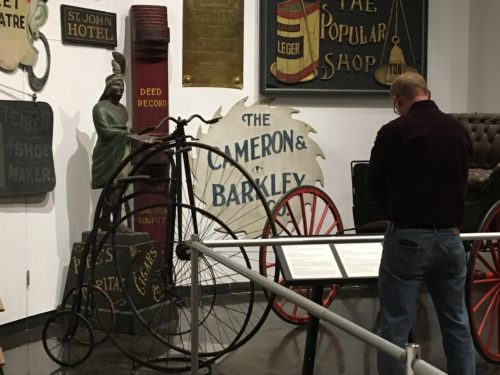
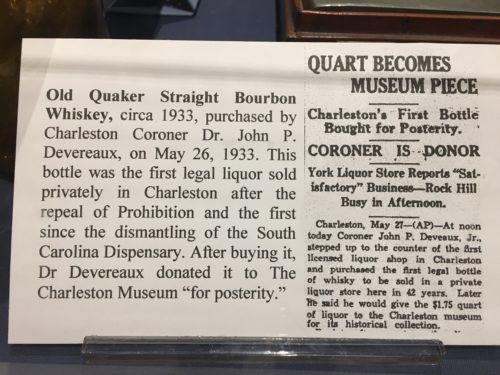
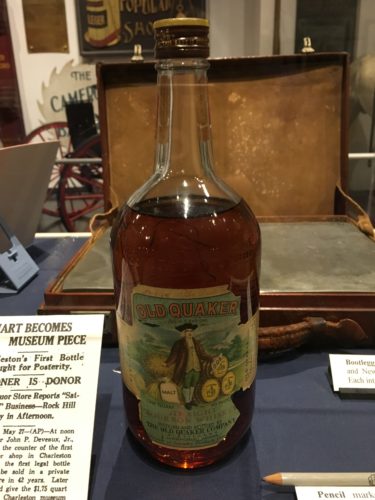
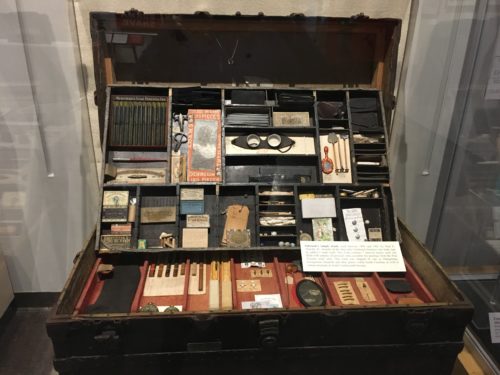
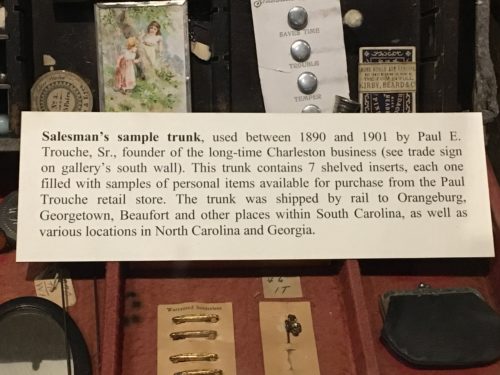
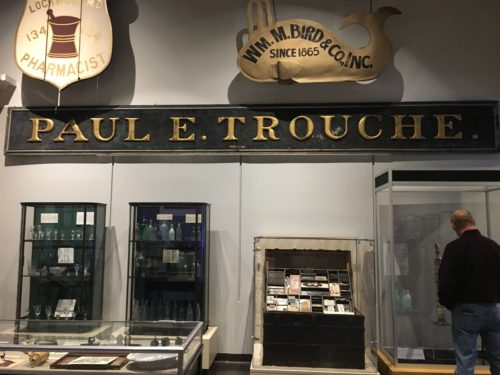
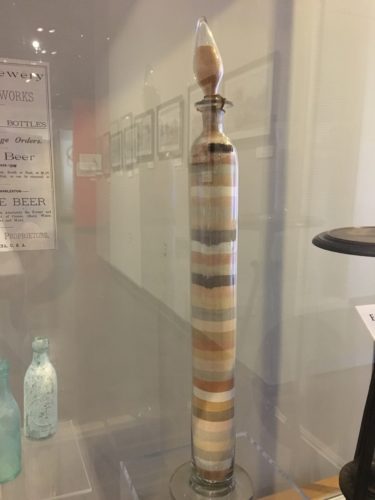

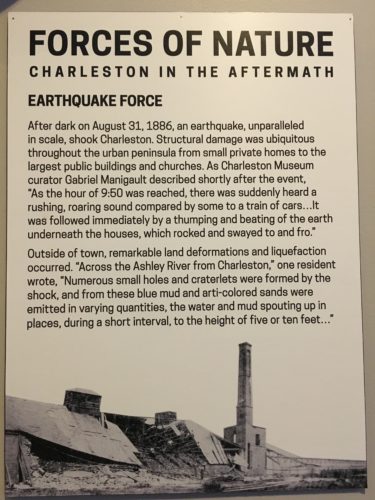
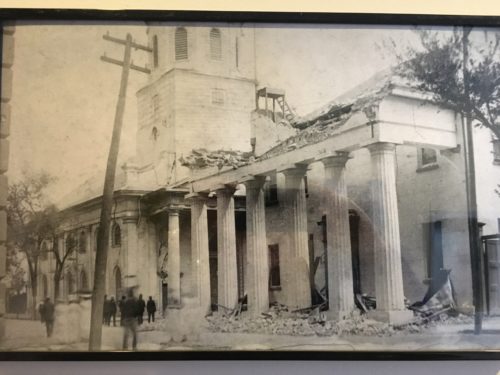
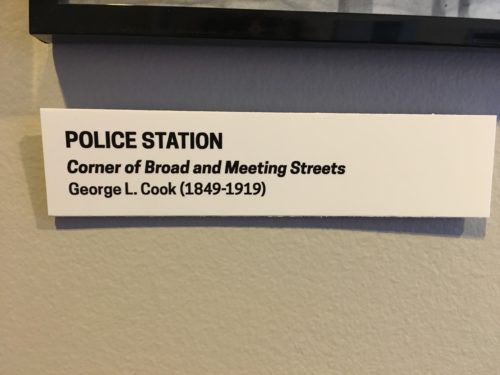
After four hours of ambling around the two buildings, we were ready for a break and really not interested in walking the many blocks to the next house museum that was included with our ticket purchase – the Heywood-Washington House – so we took the bus. Easy and free! (that’s two of our favorite four-letter words 😊)
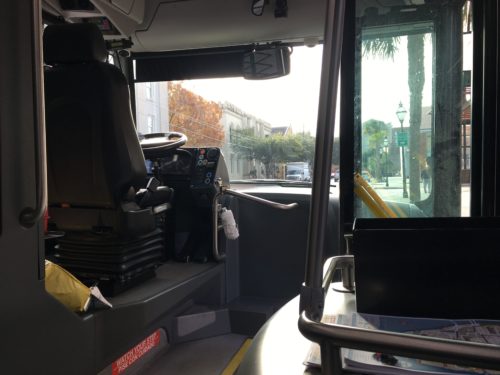
This is what our brochure has to say about this house:
Built in 1772, this Georgian-style double house and National Historic Landmark was the town home of Thomas Heyward, Jr., one of (four) South Carolina’s signers for the Declaration of Independence. On display within is a superb collection of historic Charleston-made furniture including the priceless Holmes Bookcase, considered one of the finest examples of American-made colonial furniture. The property features the only period kitchen building open to the public in Charleston, the primary work and dwelling space for the enslaved African Americans who resided there, as well as a formal garden featuring plants commonly found in the South Carolina Lowcountry in the late 18th century.
What they don’t tell you is that this is the home George Washington stayed in (the family wasn’t in residence at the time) when he was in town in 1791. Hence the title, Heyward-Washington House.
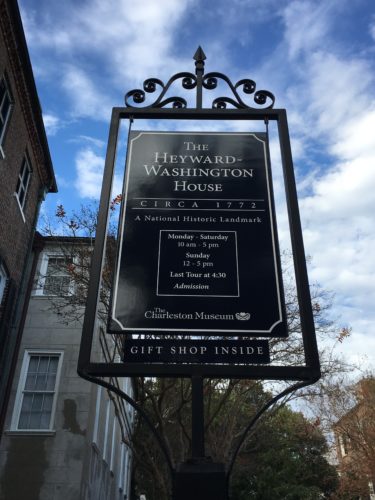
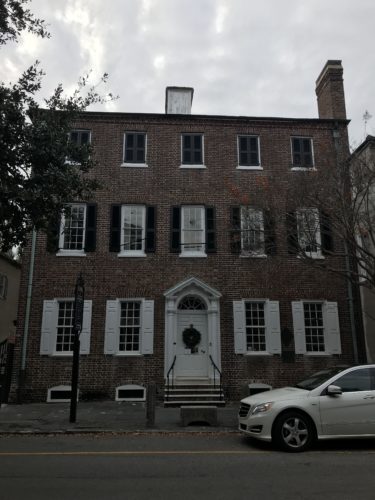
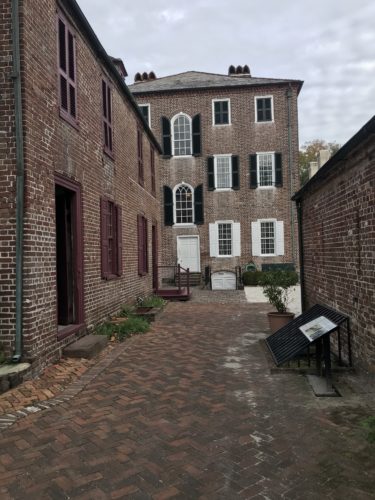
From the back yard gardens
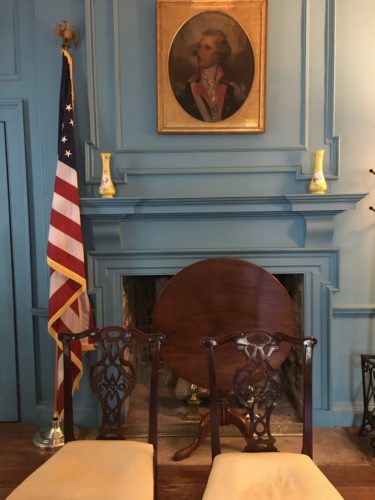
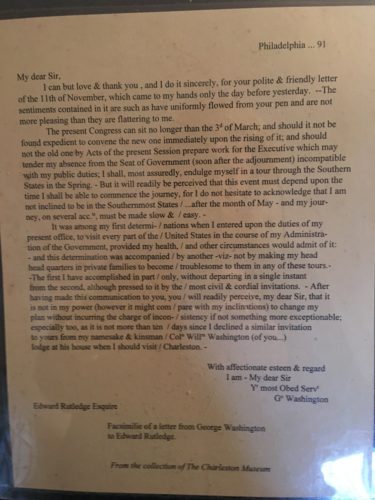
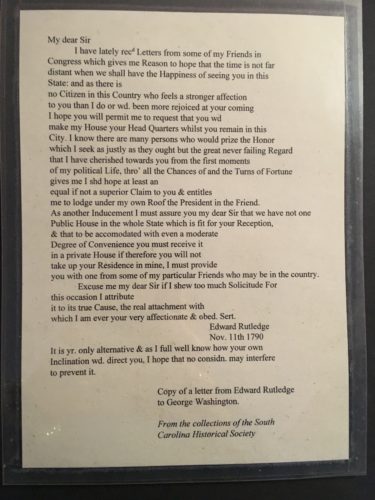
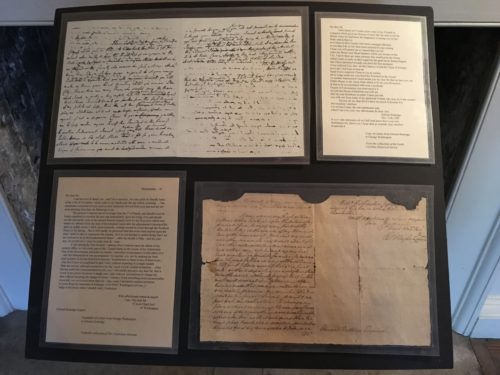
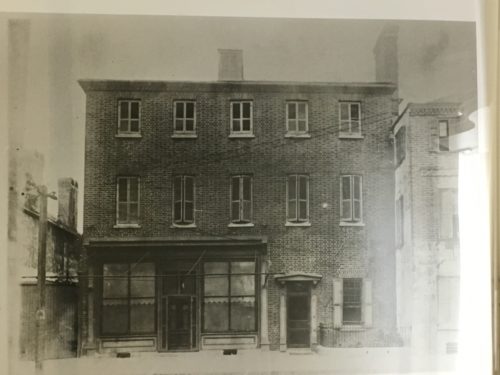
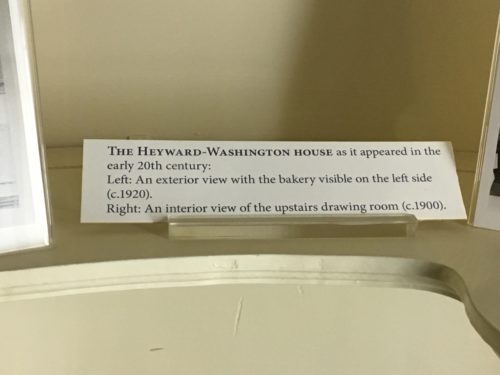
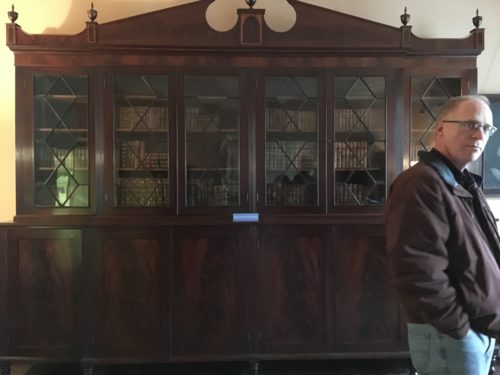
This is the priceless Holmes Bookcase
It’s fit together in 12 pieces, although you can’t tell.
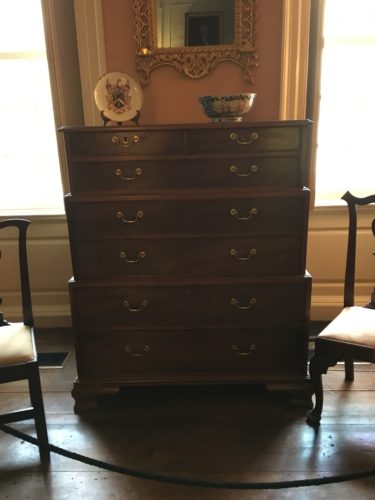
This dresser is actually three traveling trunks!
Not many survived and they weren’t very popular because pieces could be lost or damaged, but I’m sure it seemed like a great idea at the time!
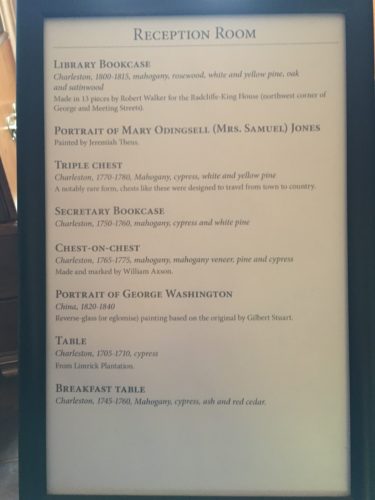
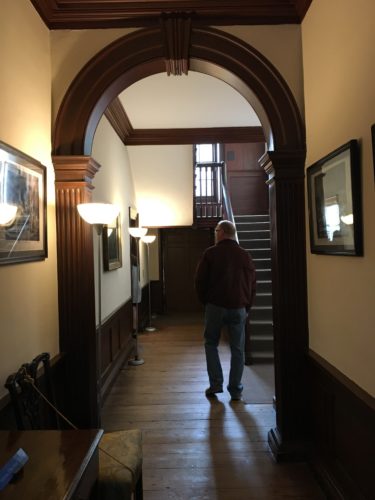
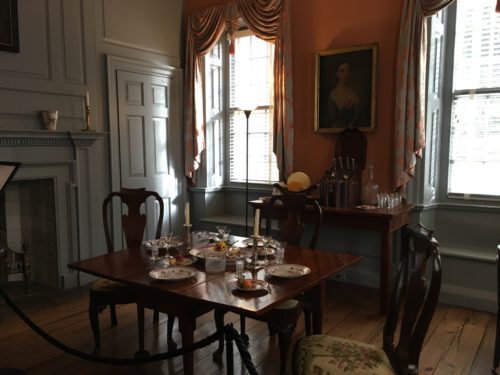
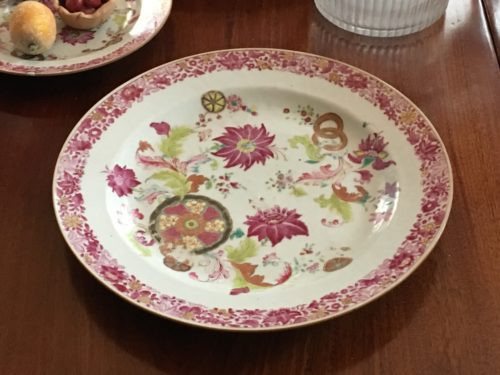
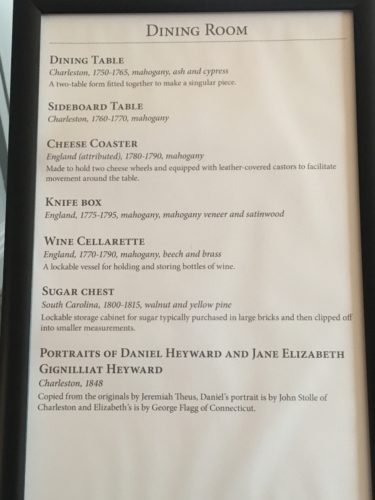
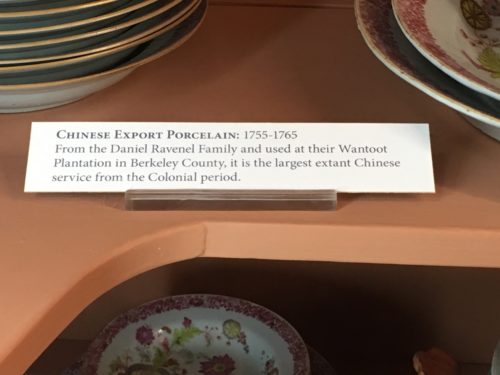
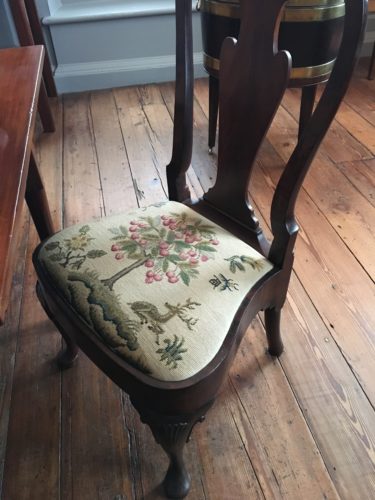
This chair, including the embroidered seat, is original from the late 1700’s!
There were four chairs and each had a different picture on it.
Remarkable shape!
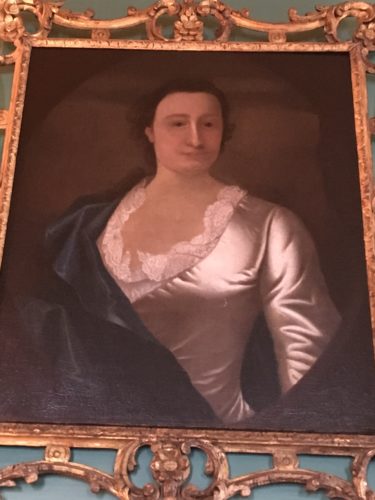
Another Theus painting.
Notice how beautiful the dress is.
But her face? Well, she’s just not looking like herself today . . .
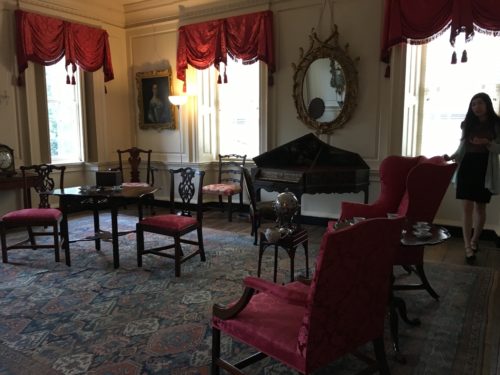
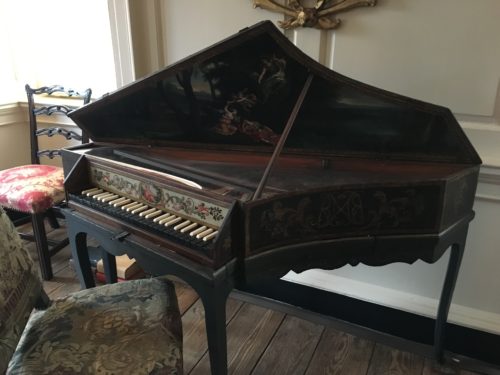
This spinet is from 1686!
The docent allowed us to go behind the ropes to look at it up close after I asked her to take a picture for me!
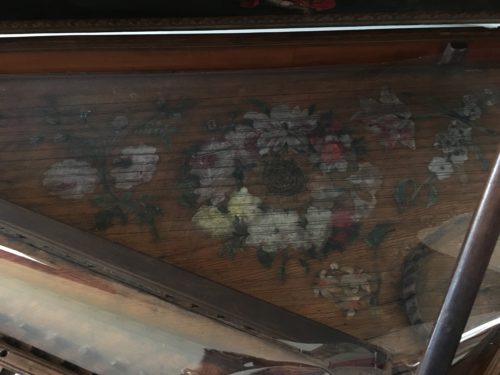
Even under the strings!
What a gorgeous piece!
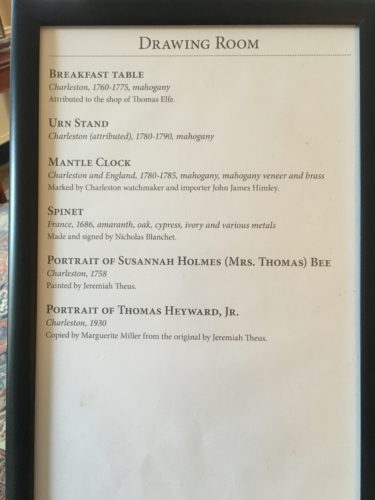
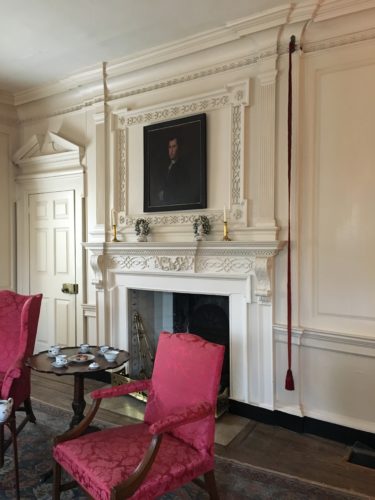
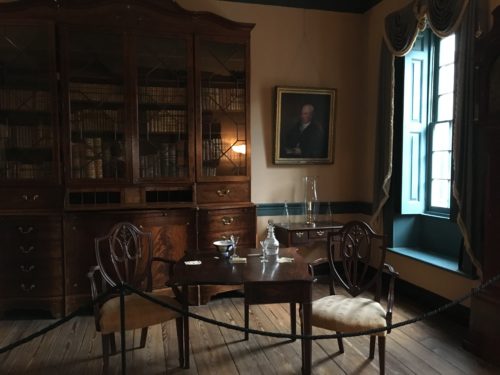
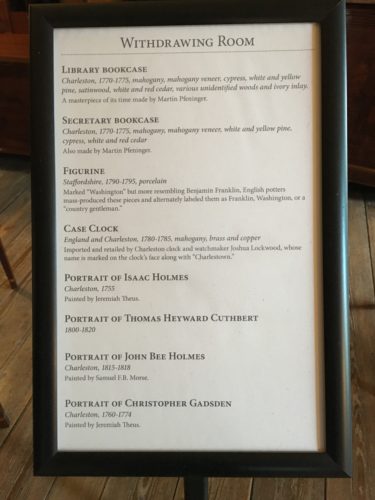
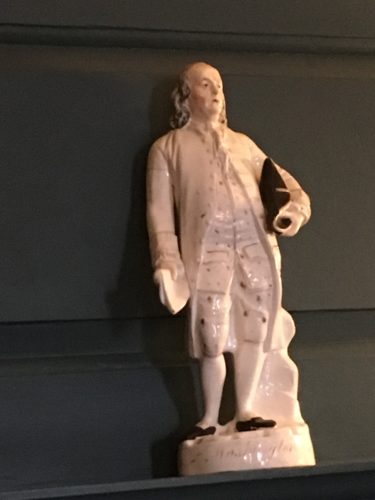
If you think this is a statue of Benjamin Franklin, you’re wrong.
Believe it or not, it’s supposed to be George Washington!
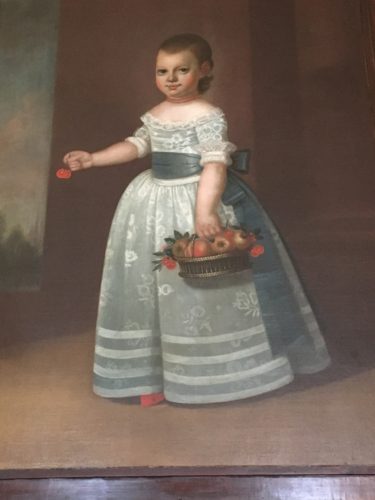
And as our docent told us, the Theus portraits just go from bad to worse!
Although, this one shows the affluence of the Heywards because their daughter is painted with arms and hands.
Hands were ‘too difficult to paint’ and thus cost more.
Hence the phrase, “That’ll cost you an arm and a leg!” : )
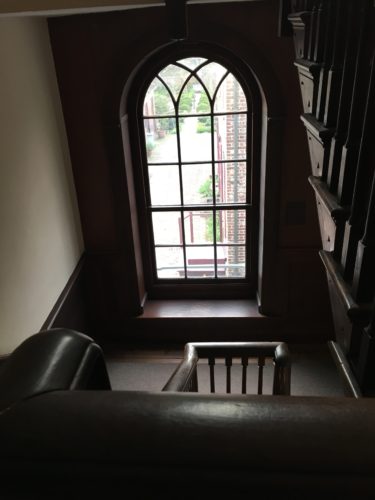
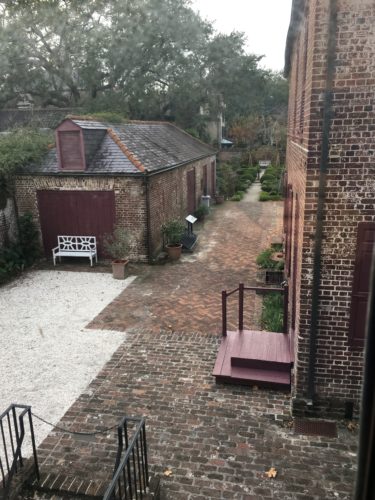
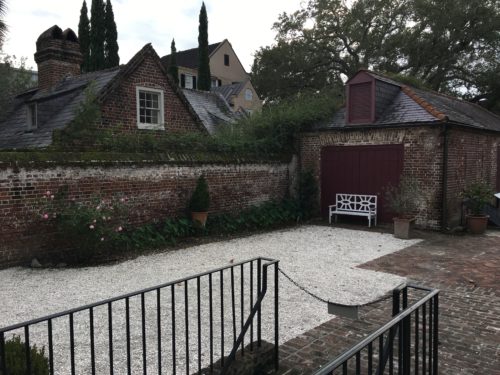
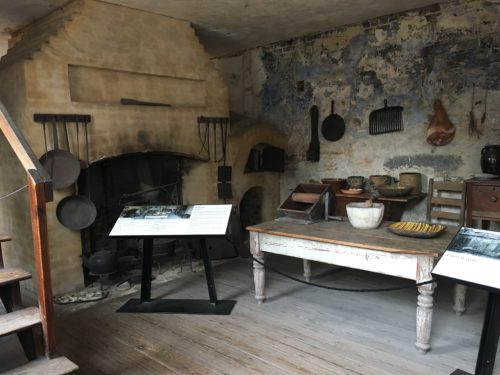
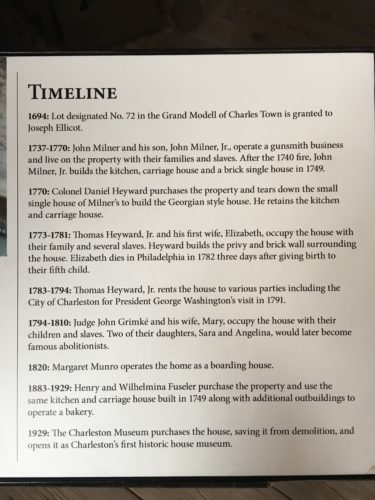
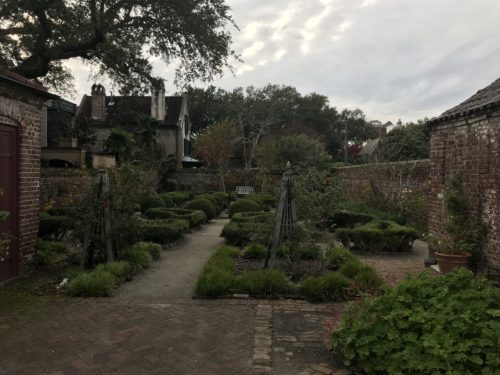
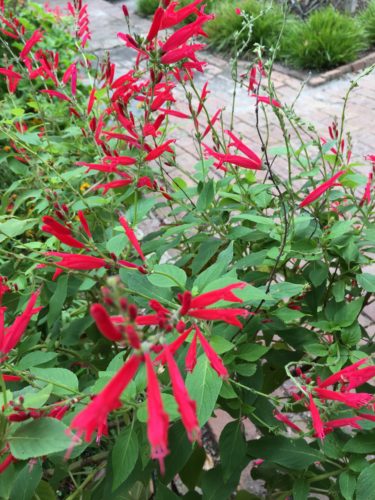
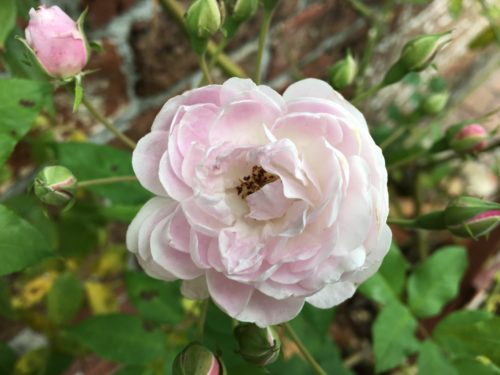
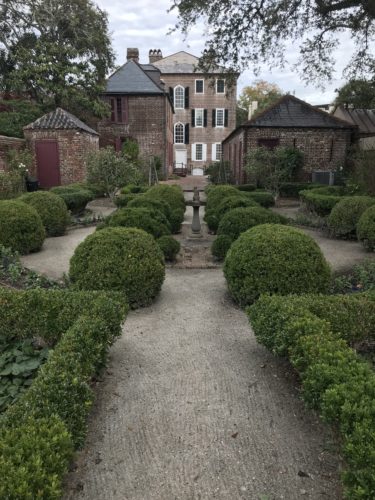
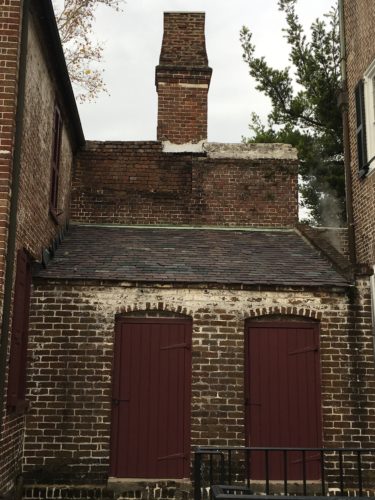
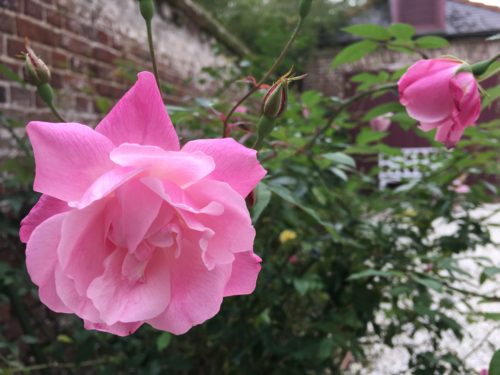
From here, it was only a 15-minute walk to dinner at the Charleston Crab House. At some point this afternoon, Blaine received an email with the wiring schematics for the slide. I see a repair day in our future . . .
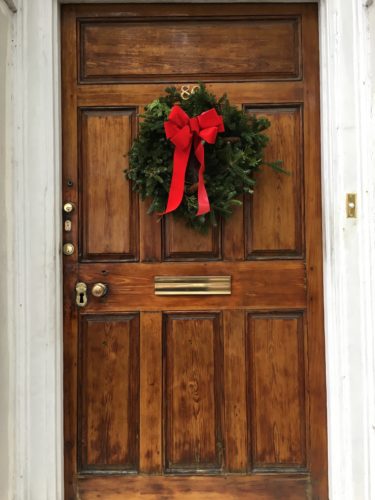
This is just a random door out on the street that I liked.
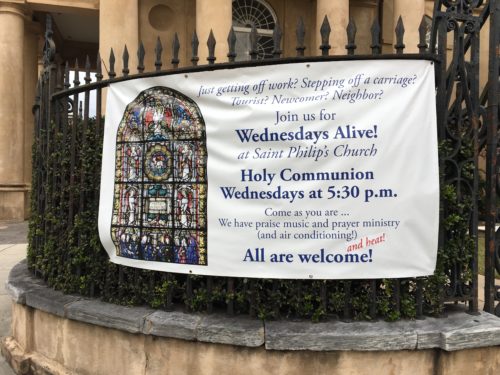
I took this picture for the ‘add-on’! Haha!
(See the red letters at the bottom?)
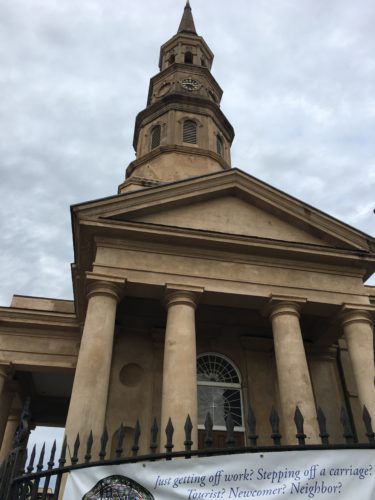
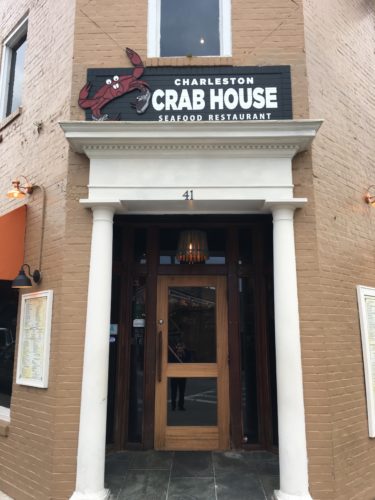
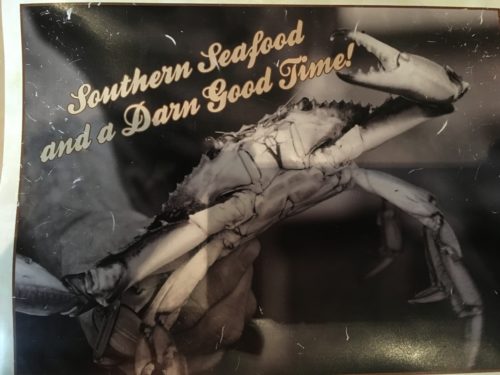
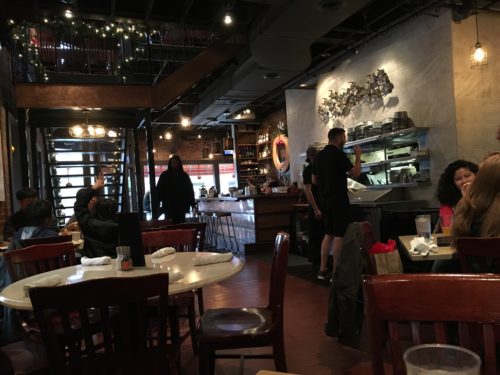
Boy, was the food delicious!!
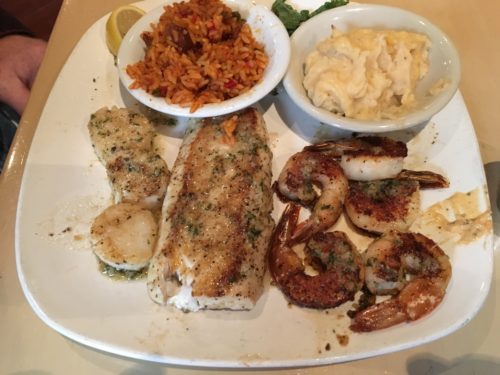
And Blaine’s – red rice, smashed potatoes, grilled shrimp, grilled scallops and mahi mahi
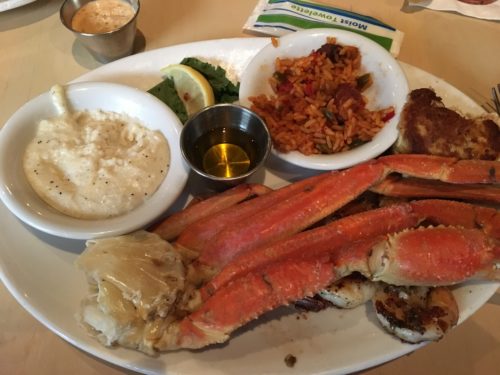
Mine –
grits, red rice, crab cake, crab legs and grilled shrimp.
Yummy!
After eating all that food, it was necessary for us to walk to our next venue, (plus the Jeep’s a long ways away) but we had about two hours to kill before our 7pm concert at the Circular Church, where we had tickets for the ‘Sounds of Charleston. This is the same one we went to last year, but it was so good, it was the first thing we planned when looking at things to do here this year. In fact, it was a must!
So we wandered around town- through the Market Place (people were closing up for the night, so we’ll return another day), and in and out of art galleries and hotel lobbies.
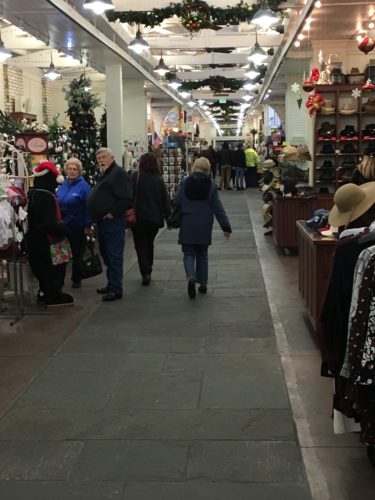
These people have to set up and tear down every single day! Must be worth it because there are a ton of vendors here!
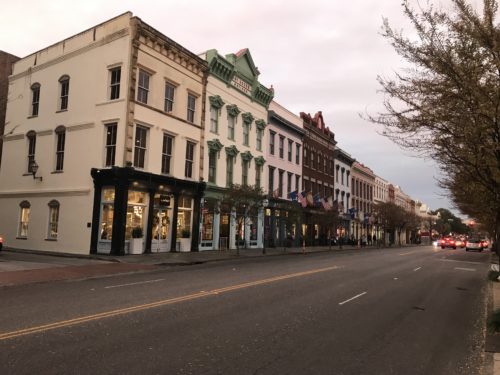
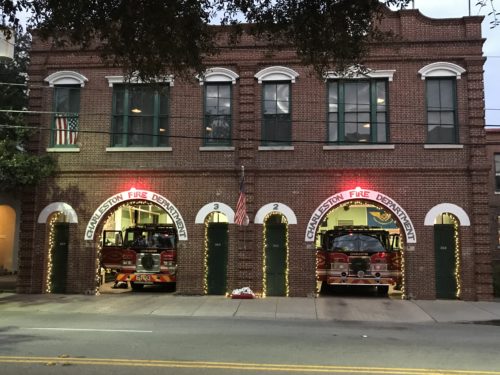
The fire station!
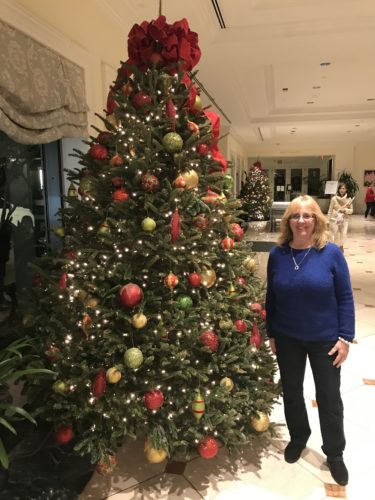
This is one of those random hotel lobbies we walked into.
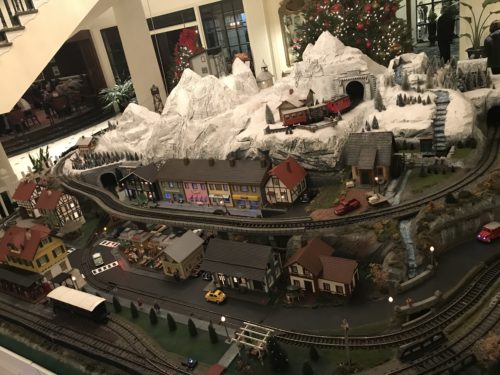
They had this great display!
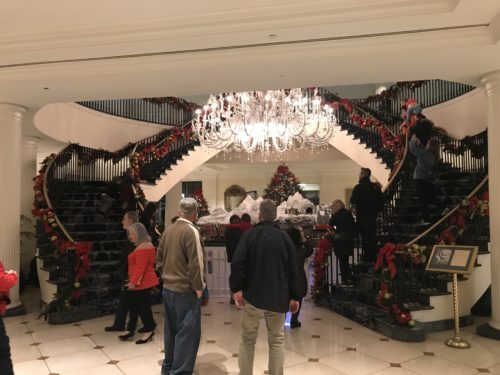
A lot of other people also thought it was great . . .
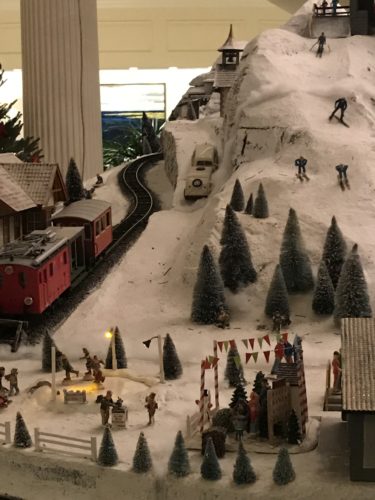
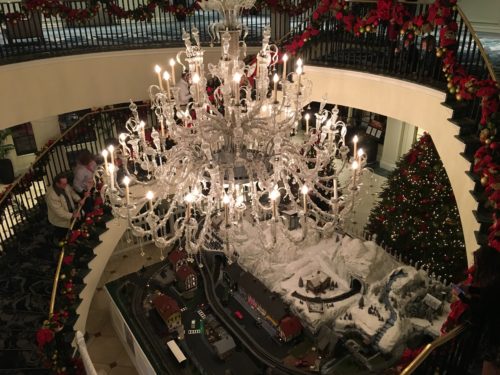
Their chandelier was nice, but it’s made of plastic.
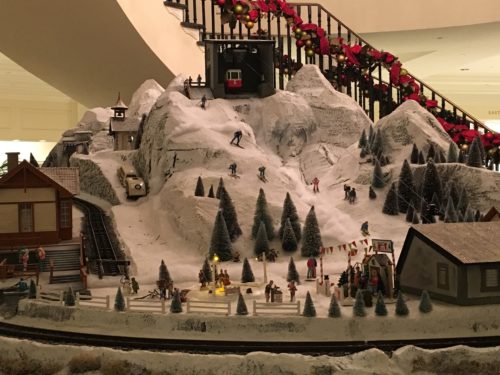
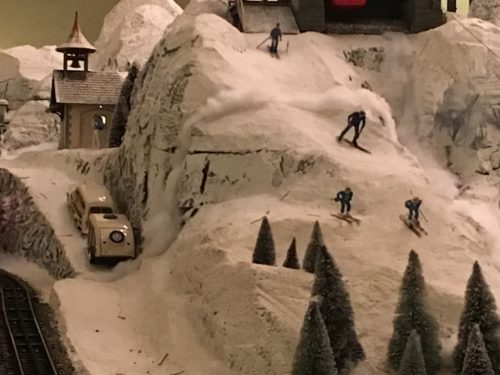

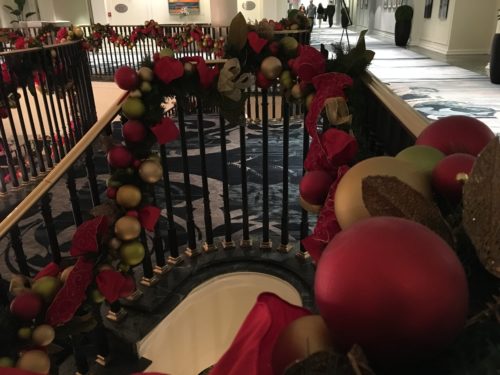
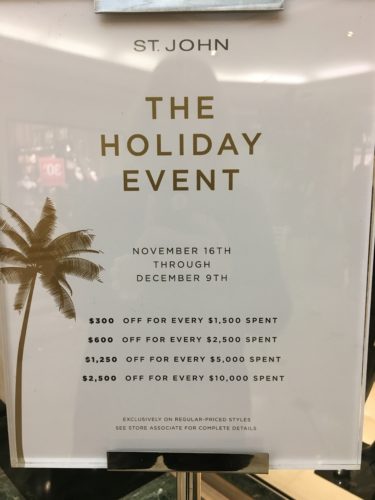
Like I said . . .Upper class
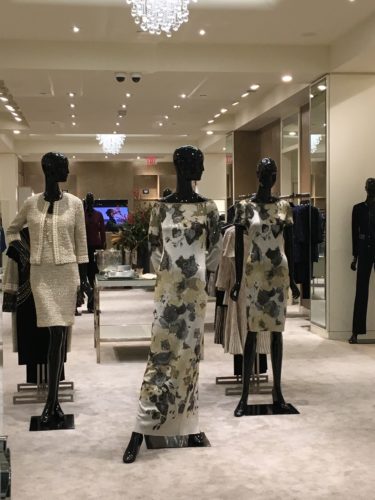
This is where The Holiday Event is taking place.
Wanna come shop?
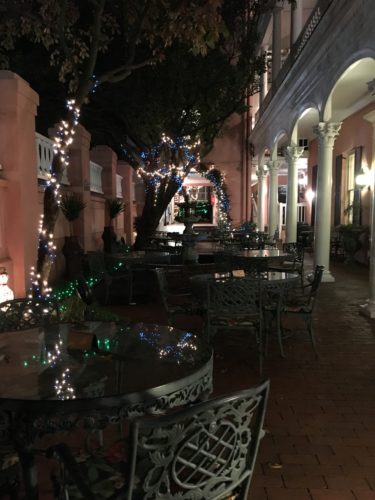
This is the courtyard of one of the hotels we passed
We timed the entrance to the Church perfectly! They were just opening the doors when we arrived!
Another phenomenal show!
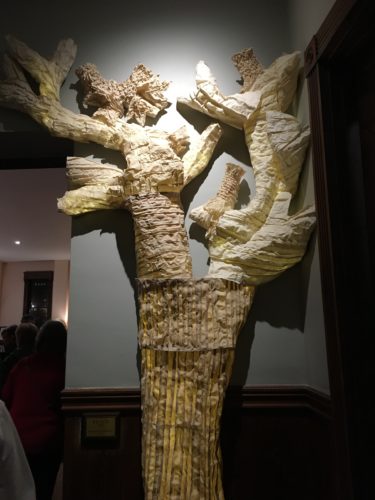
Inside the Circular Church
Don’t know what this is, but it was made of paper.
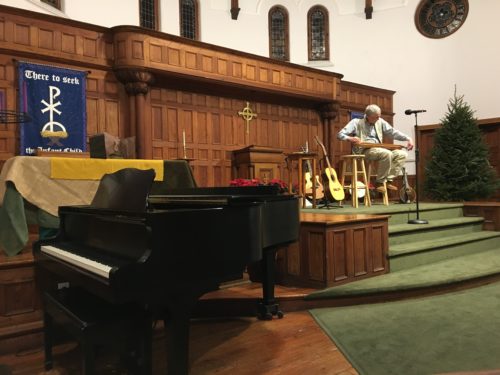
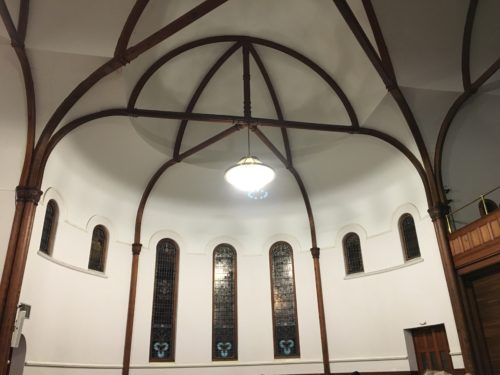
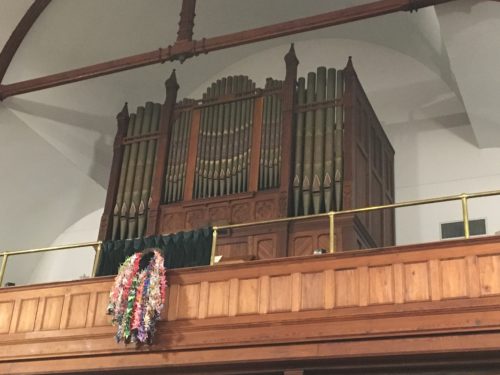
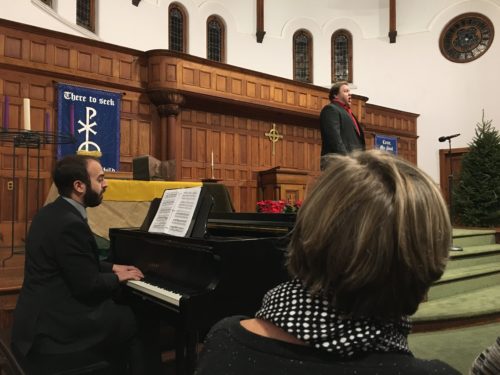
That’s Andrew Jamison
An operatic baritone. I should have had a snippet of him singing, but didn’t think of it until he was finished. : (
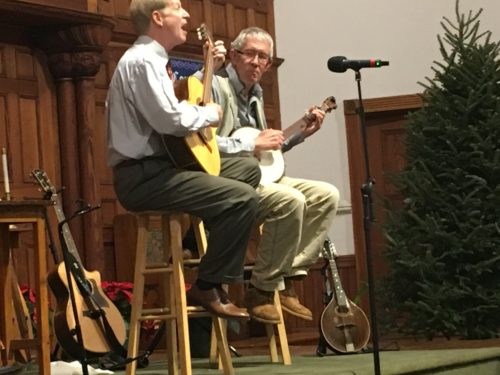
This is the director, William Schlitt and Bart Saylor. Bart is an American folk musician.
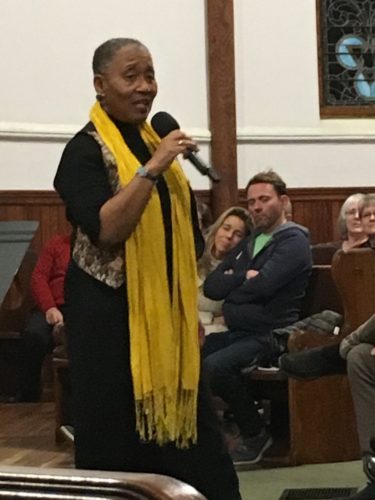
She’s Ann Caldwell, one of Charleston’s foremore interpreters of gospel spirituals and the Gullah dialect.
See that couple in the background?
We think they slept through most of the show. He sat pretty still, but her head kept falling over. However, every time someone would laugh our clap, she was right there joining in. : )
We felt bad for her, for both actually, and wondering why they were so exhausted.
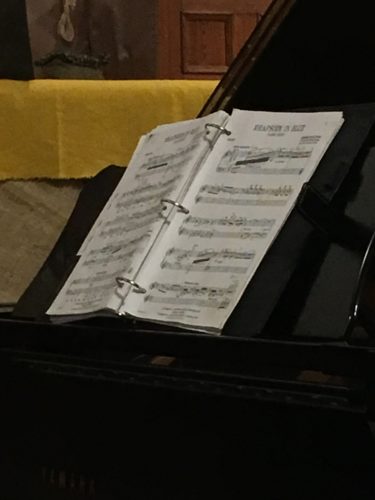
Just like last year, this was the star of the show!
“Rhapsody in Blue” by George Gershwin.
Four-handed piano, and this year, we made sure to sit where we could watch!
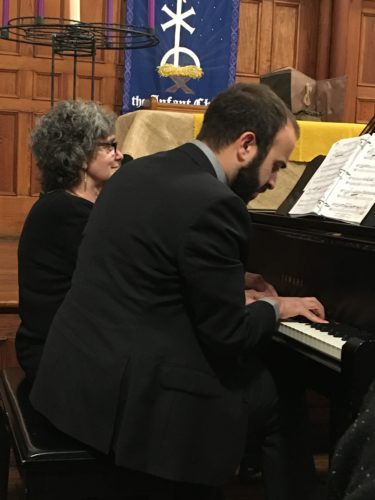
The dynamic duo!
Maida Libkin is co-director and married to William Schlitt.
And Ghadi Shayban a pianist with the Charleston Symphony Orchestra.
And then we had a quick twenty-minute walk back to the Jeep along one of Charleston’s nighttime streets. It was still there, 12 hours after we left it, along with two other cars.
You’d think our day would be over, but no!
We still had a light show to drive through! It was beautiful! And the Park offers campers a $3/person shuttle service where they drive you around so you don’t have to drive yourself. Maybe another time, but Blaine seemed to think he could see just fine since traffic was so slow.
I found this on the web about the festival at Charleston County Parks and Recreation:
Holiday Festival of Lights (HFOL) Trivia and Fact Sheet Festival History:
- In 1989, Hurricane Hugo destroyed 90% of James Island County Park’s trees that were planned to be the framework of the Holiday Festival of Lights, turning the festival’s focus from lighted trees to light displays for its 1990 debut.
- In 1990, the Holiday Festival of Lights premiered and attracted 85,000 visitors with only 18 light displays over a two-mile route.
- The festival’s first 18 light displays were made by Bernie Pettit in Wheeling, WV. Retired Light Show Supervisor Rich Raab built each display afterward. His first light display was “Santa on the Roof” at the Park Center.
- All of the other light displays were (and are today) constructed on-site by park staff at James Island County Park.
- In 1994, the Fun Run and Walk was added as a preview to the festival.
- In 1996, Santa added the Holiday Festival of Lights to his schedule and continues to visit with thousands of boys and girls each year.
- In 2010, event staff introduced the children’s Light Display Design Contest, where kids submit their ideas for a new display at next year’s festival. Winning displays have featured a Ferris wheel (installed in 2011), and the South Carolina state flag (installed in 2012), a penguin sliding down an ice berg (2013), a seal pup (2014), the pineapple fountain (2015), and a dog stuffing a stocking (2016). 2015 marked the final year the contest was offered, but the winning displays are a permanent part of the event.
The Light Displays:
- All but 18 of the light displays were constructed on-site by park staff.
- The first animated light display, depicting the Jack-in-the-Box, was programmed and operated by a computer donated to James Island County Park in 1990. The display is now on its third computer.
- The festival features various themed sections, including Sea Land, Dinosaur Land, Candy Land, and Toy Land. Lowcountry and Charleston landmarks are also depicted in lights, including Fort Sumter, Rainbow Row, the Cooper and Ravenel Bridges, the USS Yorktown, St. Michael’s Church, and others.
- The Light Show Crew works year-round to design, build, construct and breakdown the festival.
- It takes between six to ten weeks to create one light display.
- The life span of a light display is about five years prior to reconditioning.
- An estimated 23 miles of rebar has been used to create the festival’s displays.
- The Ravenel Bridge light display is 30 feet tall and roughly the length of a football field.
- The giant lighted Oak Tree takes 80 hours to complete, and is composed of 10,000 lights.
- The golfing Santa display hits a hole in one every time, at a distance of 220 feet.
- The festival’s 750 displays are comprised of over 1,000 pieces that are stored within 28 trailers in the off-season
- There are 2,500 breakers and 40 transformers used to power all of the festival’s displays, and it takes a full hour to turn on and off the show each night.
By The Numbers:
-
Though organizers have lost count, it is estimated that there are over two million lights shining bright at the festival.
-
Throughout its 28-year span, more than 4 million people have toured the Holiday Festival of Lights.
-
An estimated 25,000 hot cocoas and 19,000 marshmallow sticks are sold on the festival grounds each year.
-
The festival trains take approximately 40,000 guests through the park woods and around the lake each year.
-
The carousel whirls about 30,000 riders around each year.
-
In 2015, the festival’s attendance was 244,795 people in over 65,000 vehicles, which was the highest number of visitors ever reported.
-
In 2016, the festival saw over 13,000 visitors in one evening.
-
It takes about one week and 50 tons of sand to construct the giant holiday sand sculpture, which is held together with a mixture of glue and water. At the end of the show, the sand is placed in the dog park to re-nourish the lake’s beach.
-
In 2016, visitors donated 14,681 pounds of canned goods to the Lowcountry Food Bank to receive a discount on admission to the festival. That is enough food for 12,234 meals. Canned food discounts are available Monday through Thursday.
-
Over 100 local businesses and organizations contribute to the success and growth of the event through sponsorship.
-
Each year, the festival staff generally sees license plates from all 50 states.
-
Many staff members from various divisions of the Charleston County Park & Recreation Commission commit volunteer evening hours throughout October to hand-string thousands of mini-lights on trees, shrubbery and other areas along the road – the goal being not to have “one dark spot.” The involvement by so many different people contributes to the uniqueness of the Festival. There are about 10,000 strands of these lights strung each year, or 500,000 individual “mini” lights, covering 75 different locations throughout the festival.
-
The Festival relies heavily on volunteers for checking and replacing an estimated 180,000 light bulbs and working at the Festival once it opens. A primary source of volunteers is the Campground Host Club, which donates over 4,100 hours each year. This club consists of 18 couples who travel around the country in their RV’s, and reunite each year in Charleston to volunteer at the Holiday Festival of Lights.
-
During the Festival, around 8 tons of waste is recycled from the park and its campground.
-
The Giant Greeting Cards are 4×8 feet in size, and are created by local schools each year as part of an art competition.
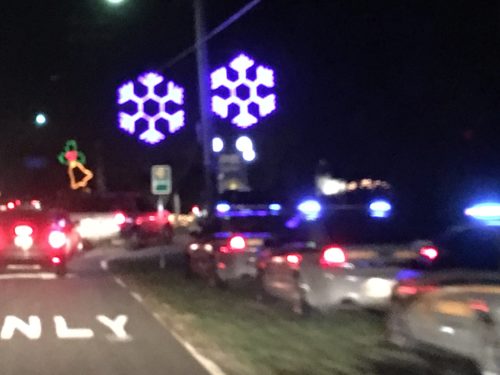
Before we even enter the check-in area.
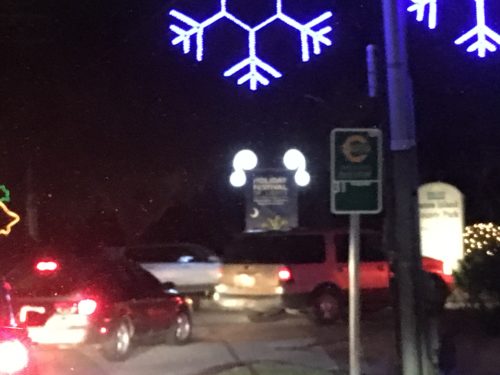
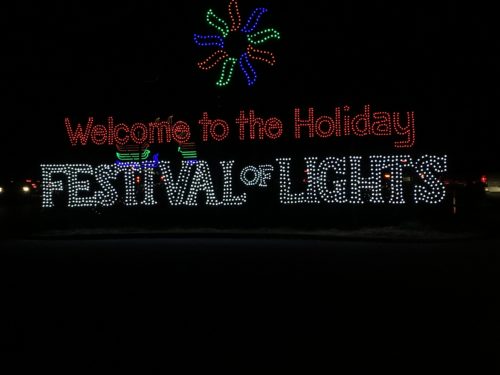
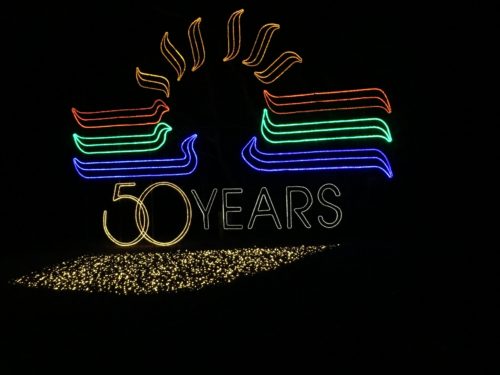
I don’t know where I wrote that the light show is 50 years old.
It’s the Park that’s 50.
The light show is 29.
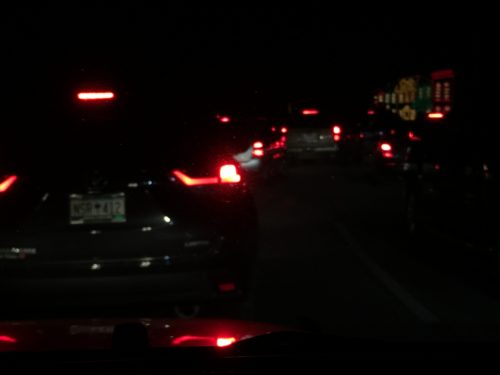
It began this way, but didn’t stay like this.
We think maybe a lot of people pulled into the side parking areas to do the other Christmas activities here.
We’ll do that another day.
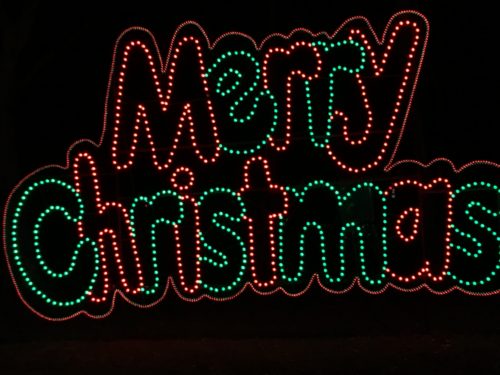
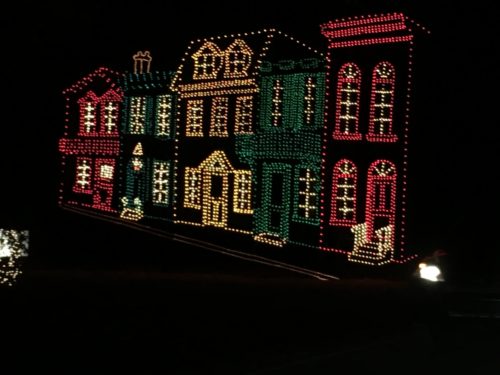
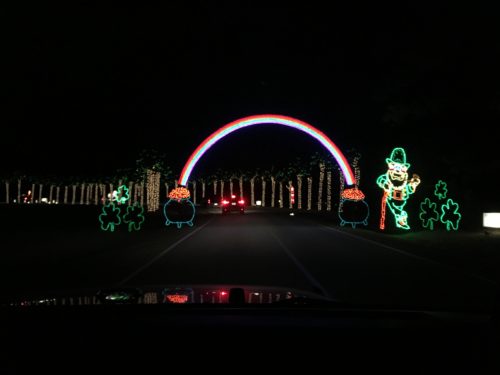
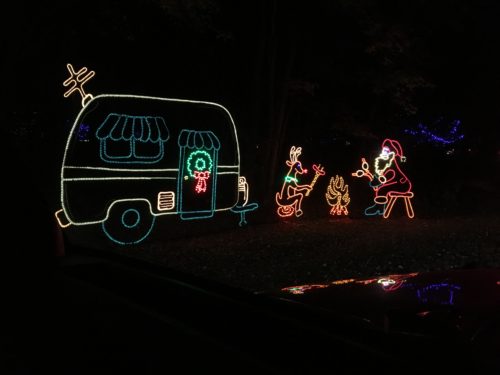
Well whadaya know! Santa camps too! Wonder where he goes in the Summer?
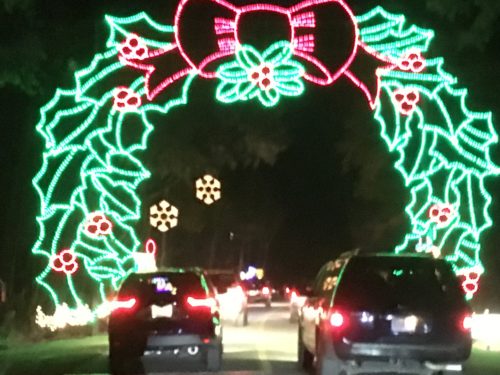
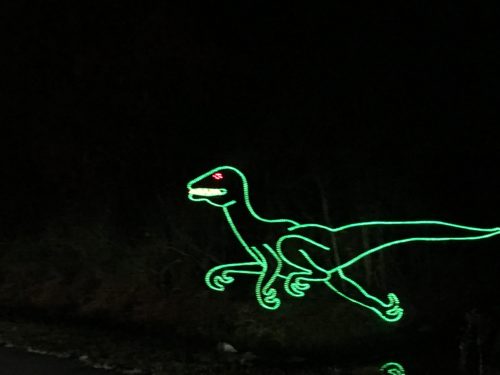
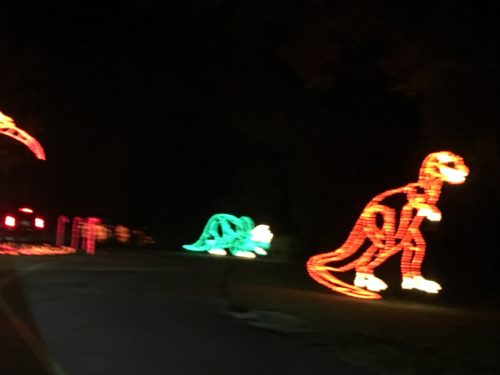
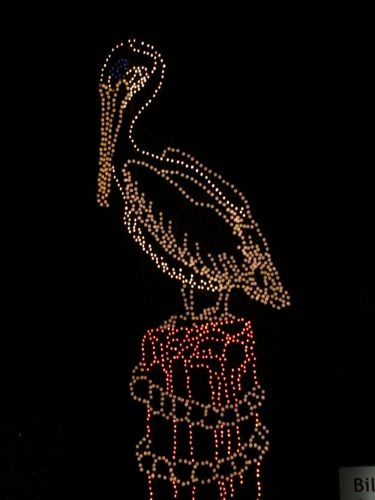
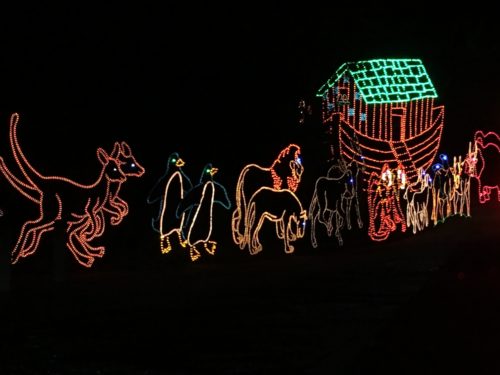
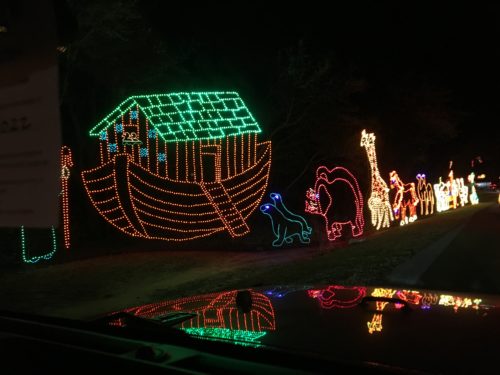
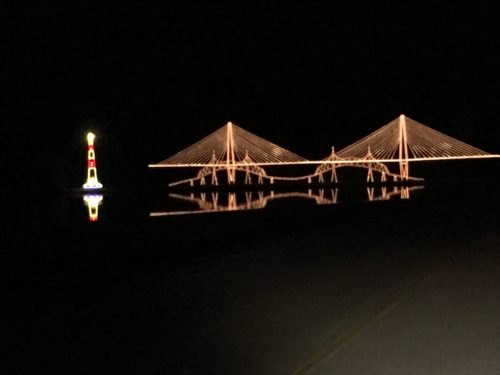
This depicts both the old bridge and the new one.
Great day! We’re bushed!
